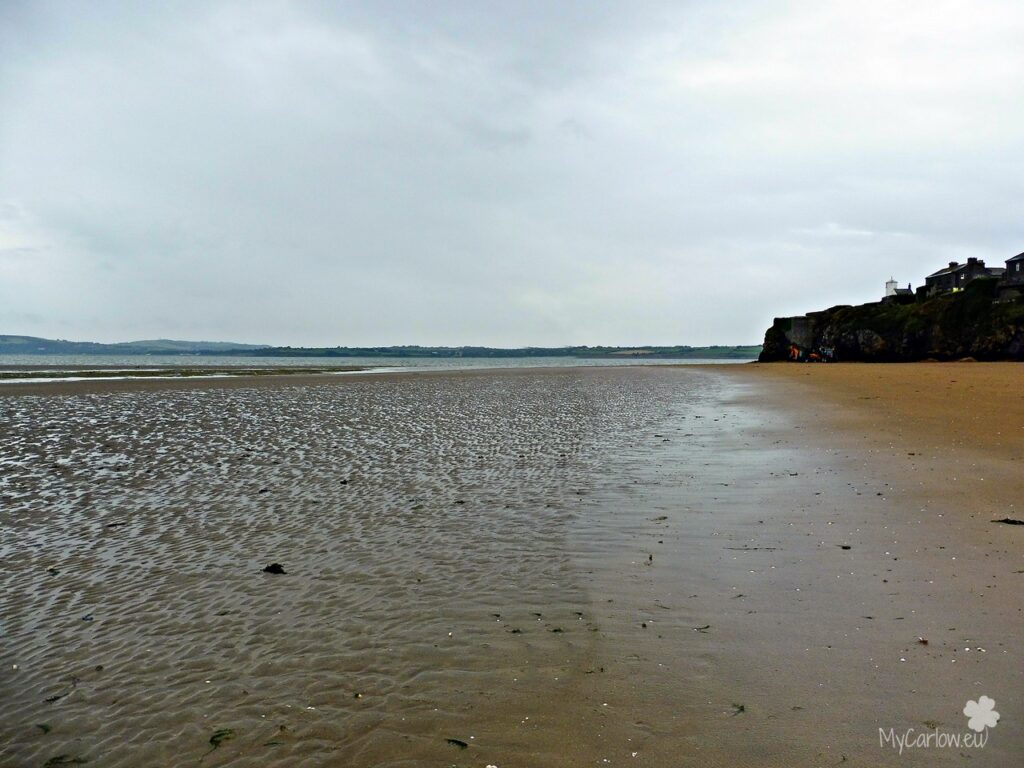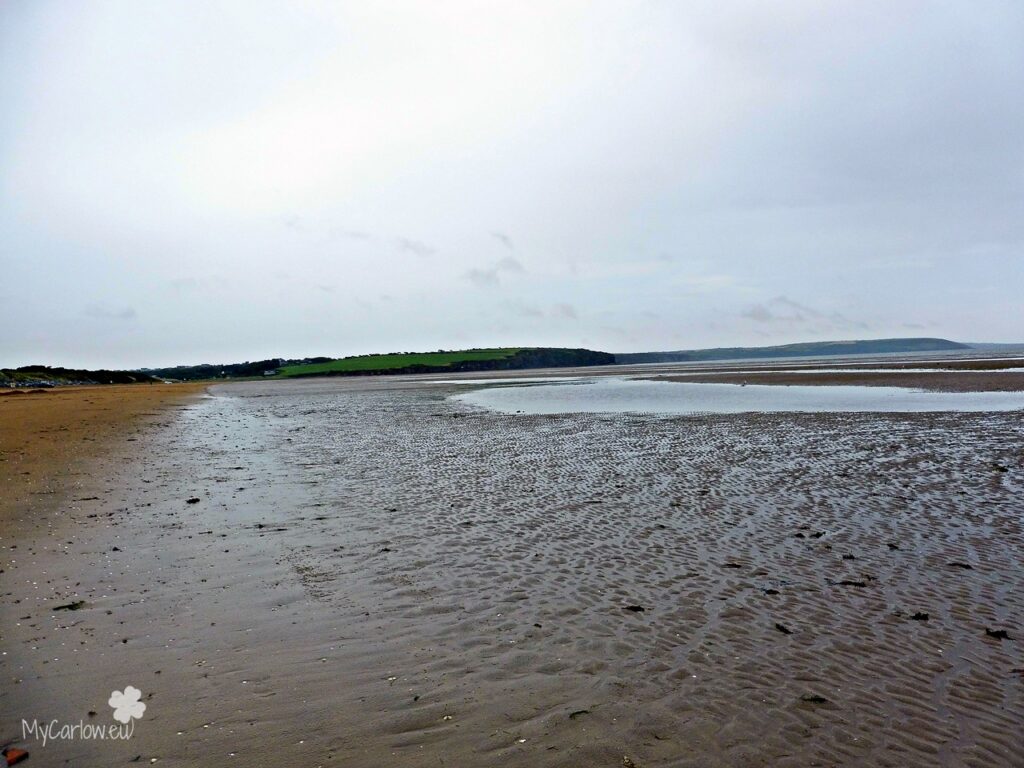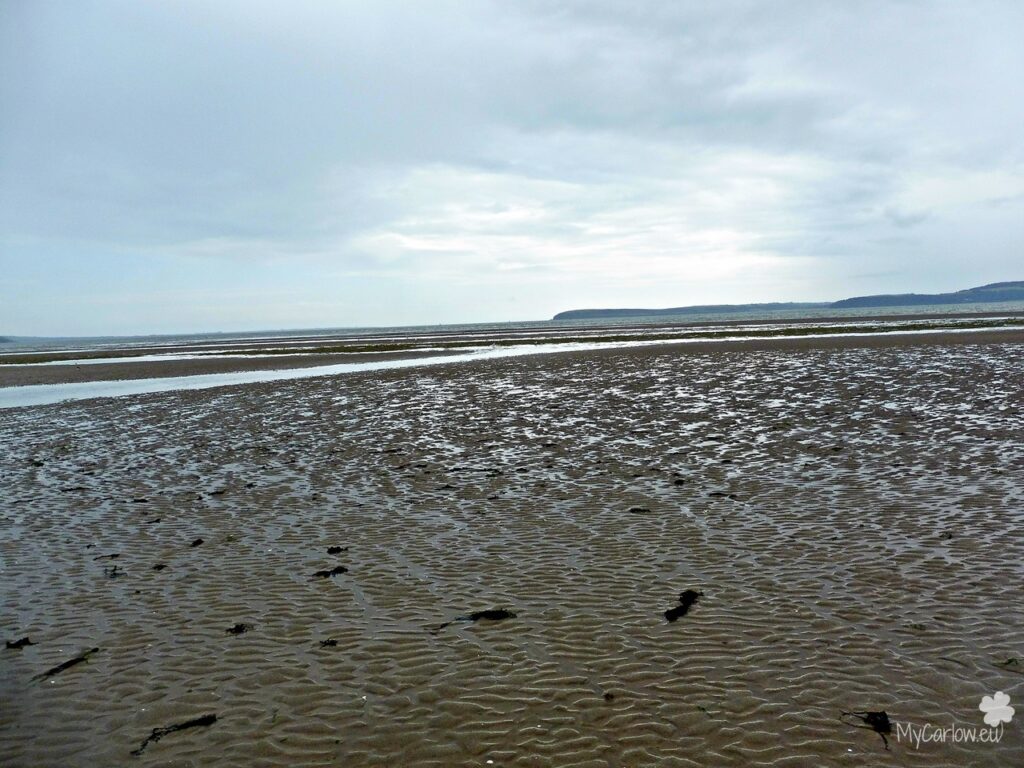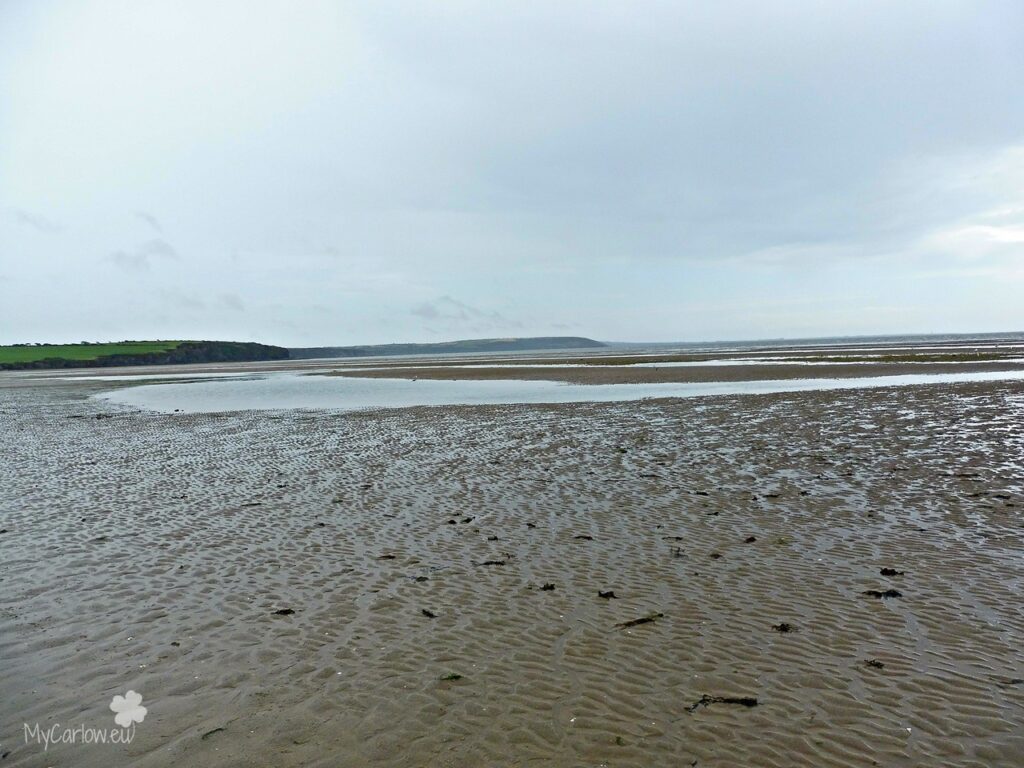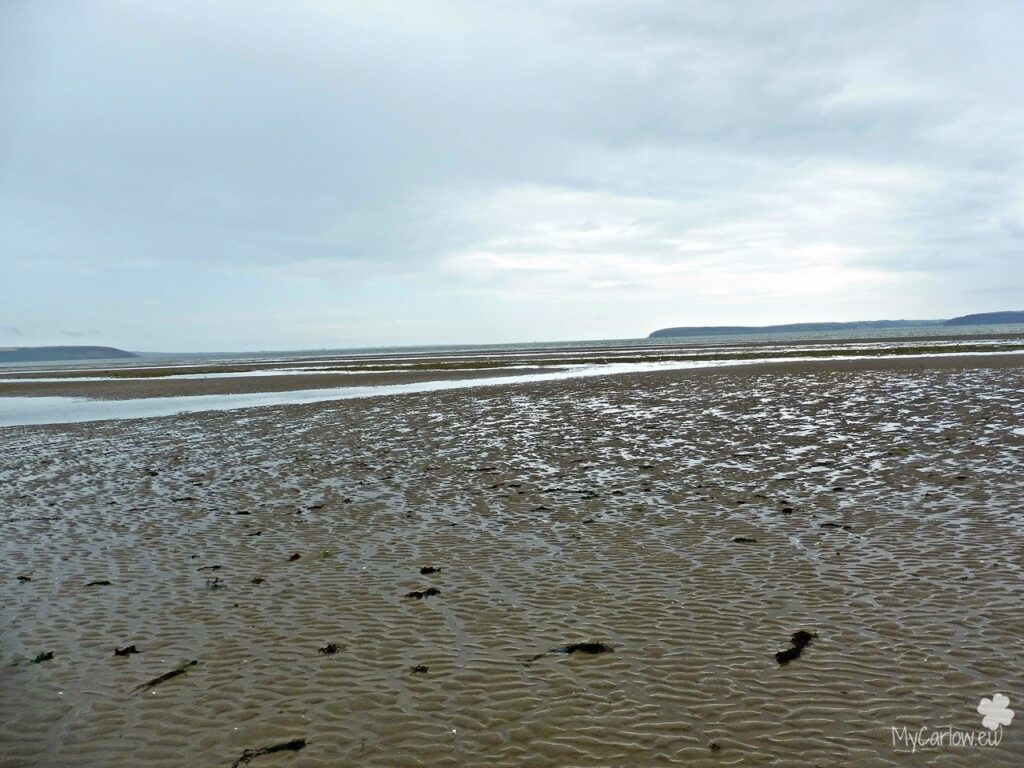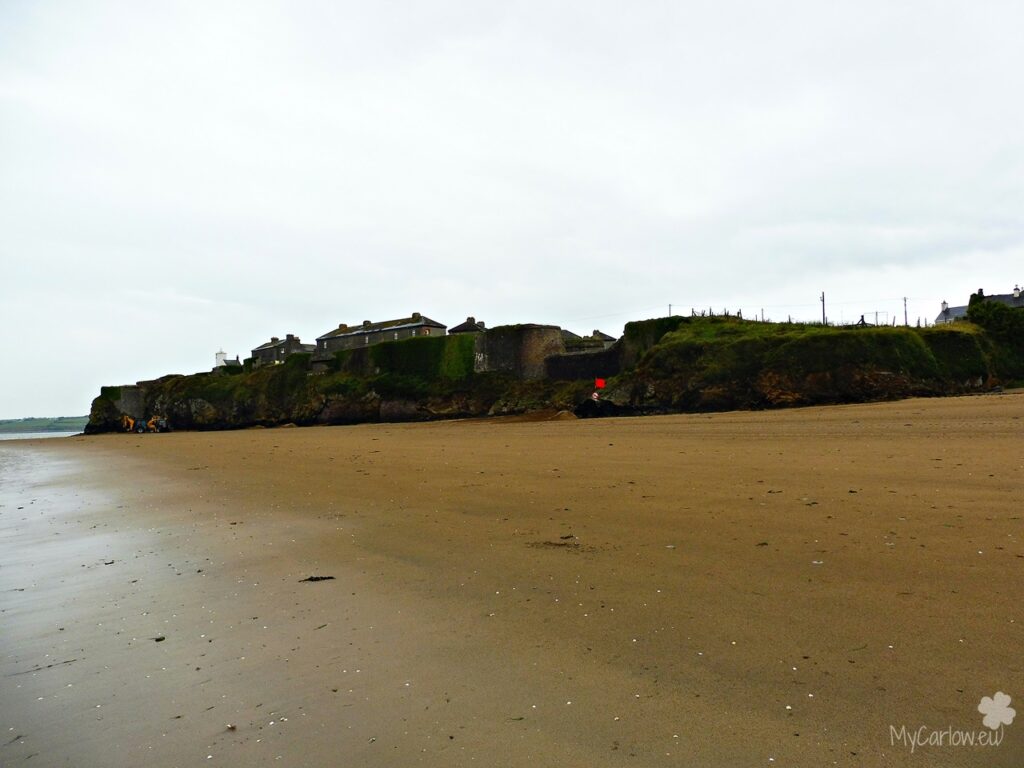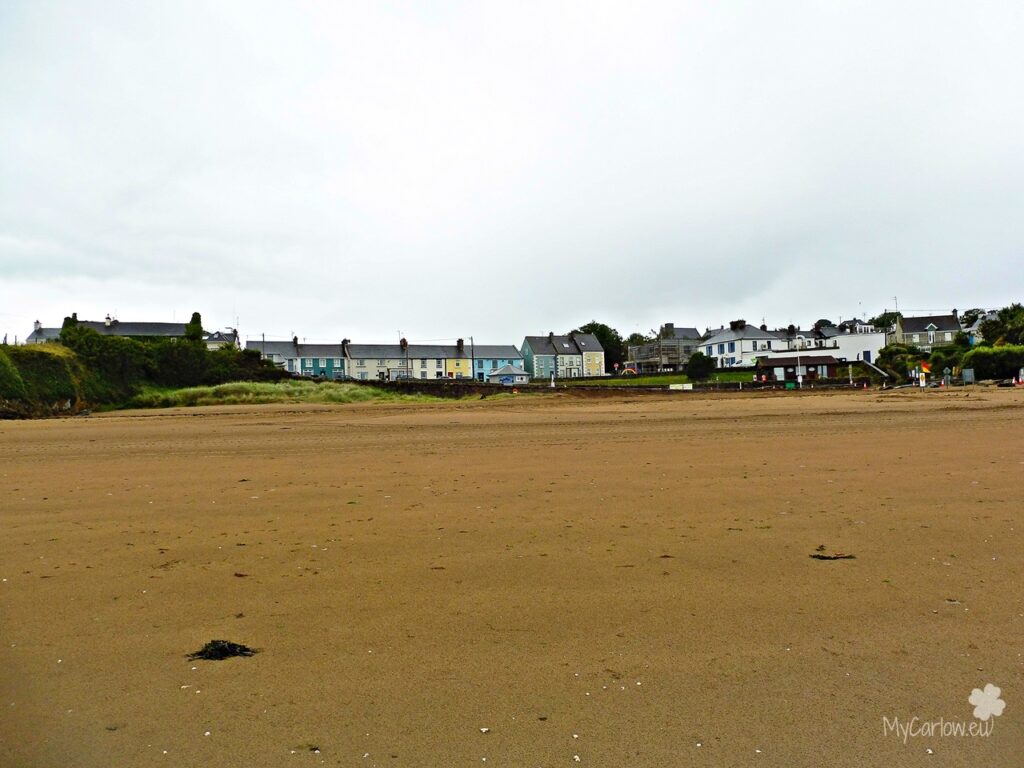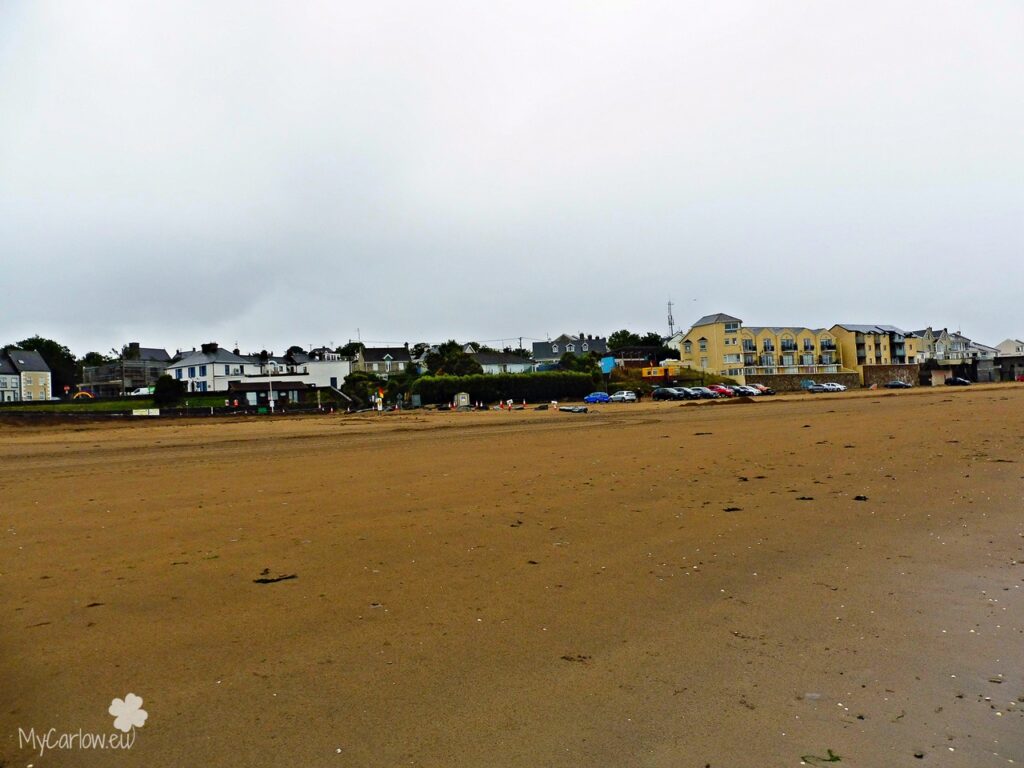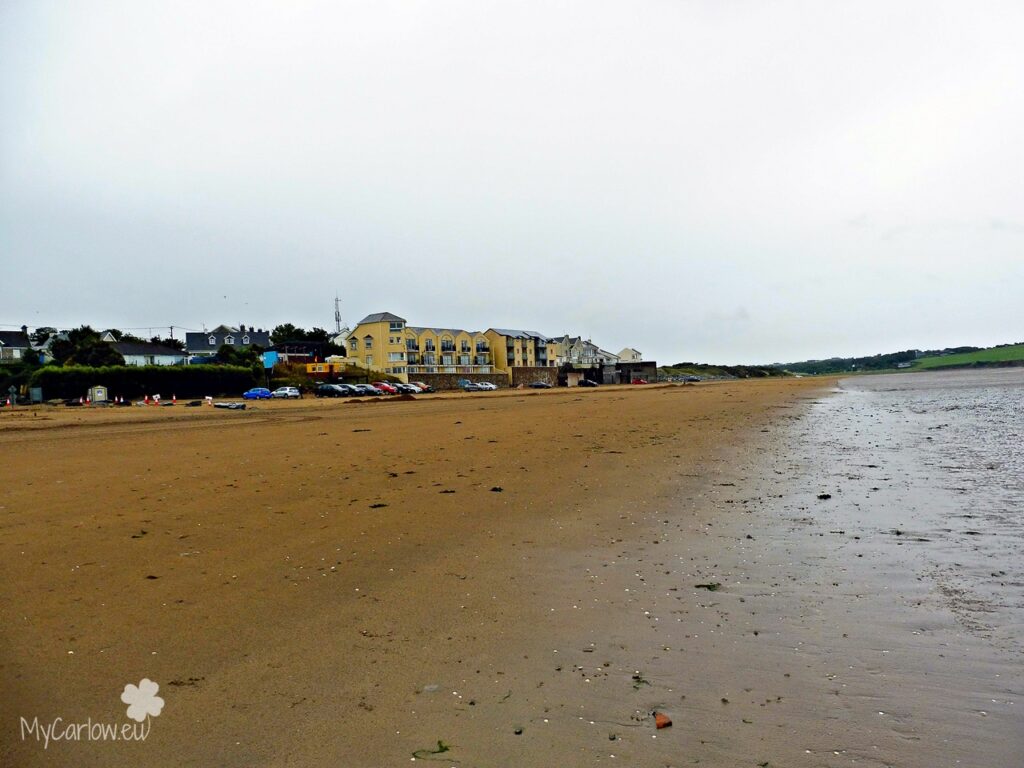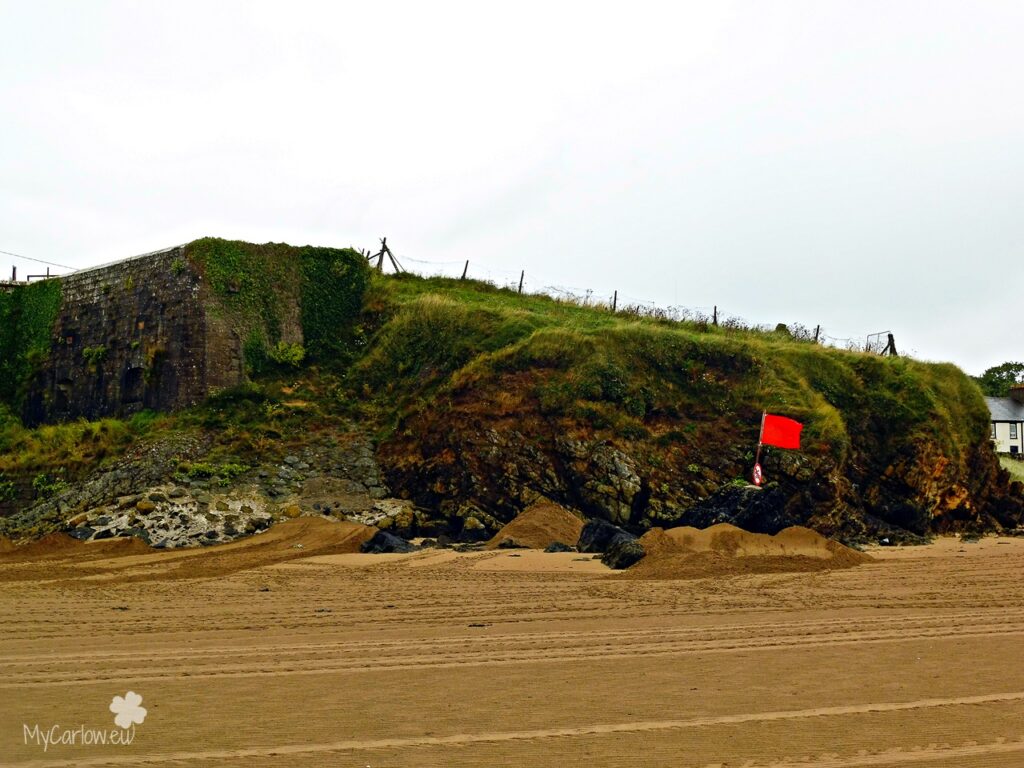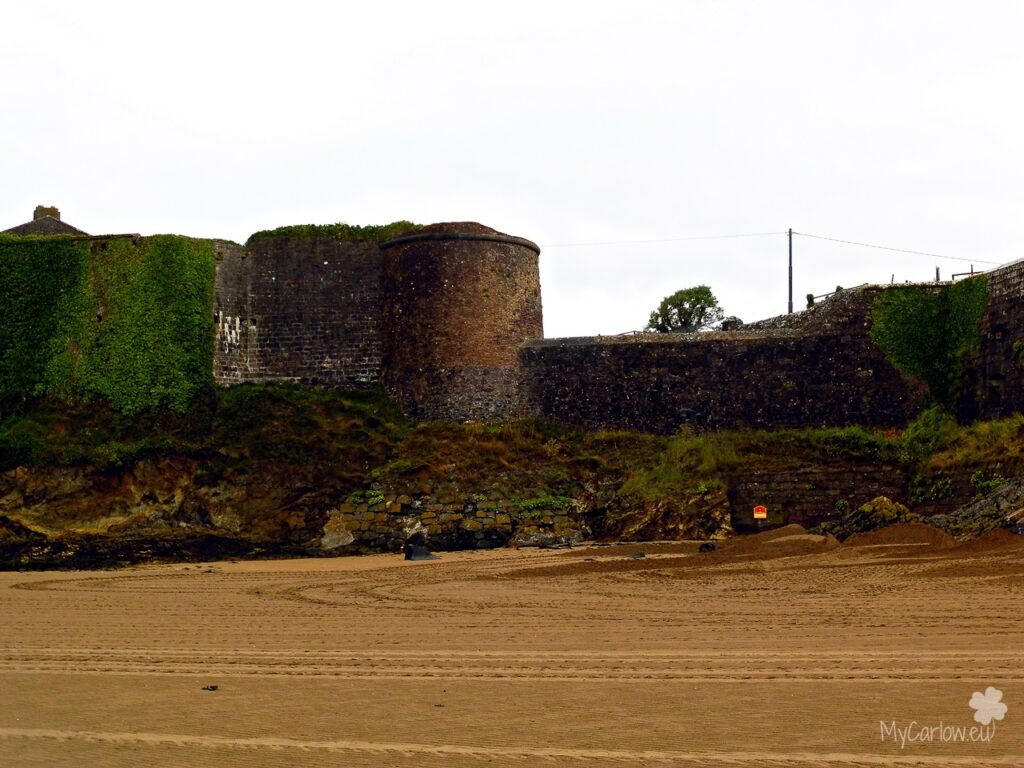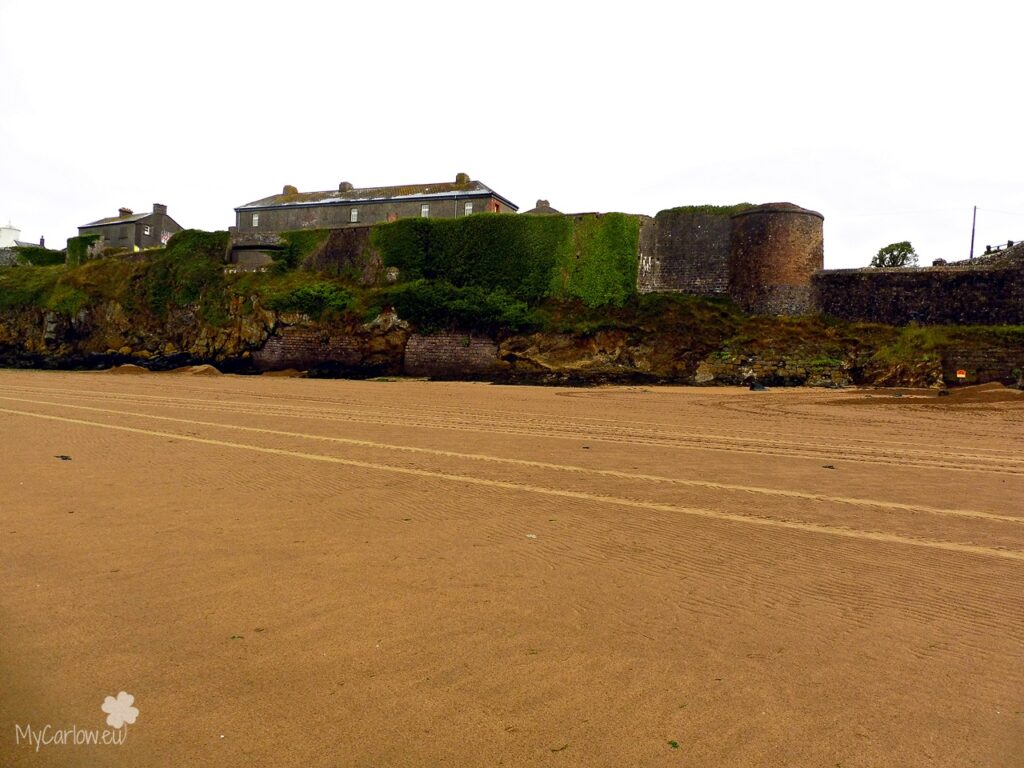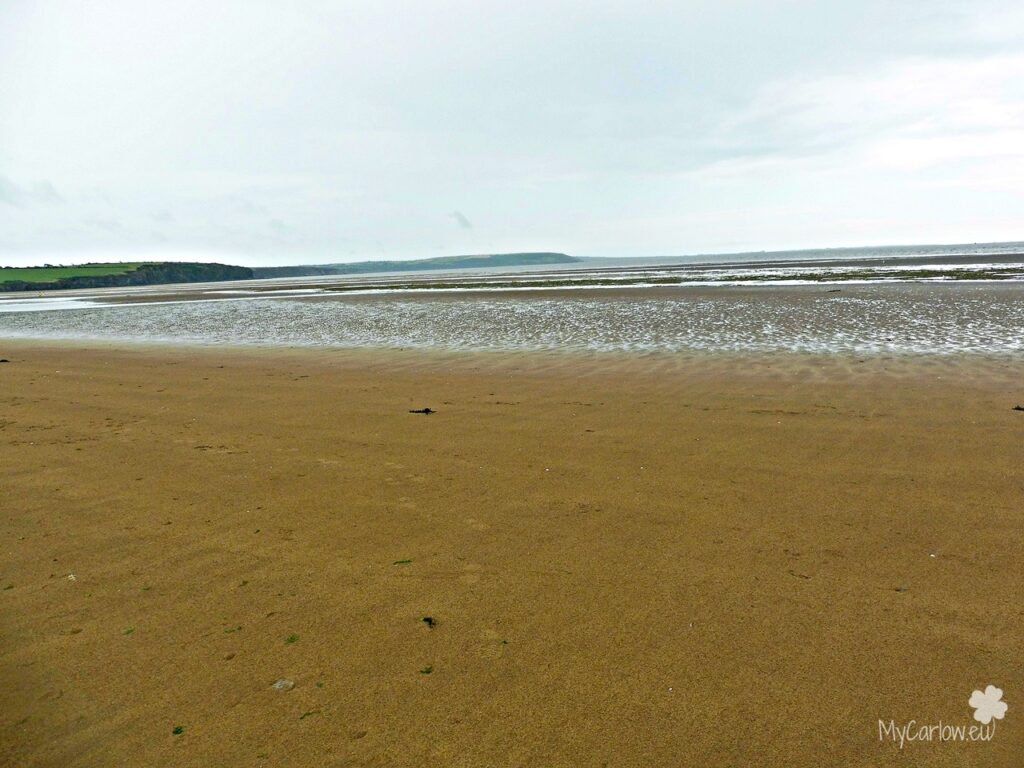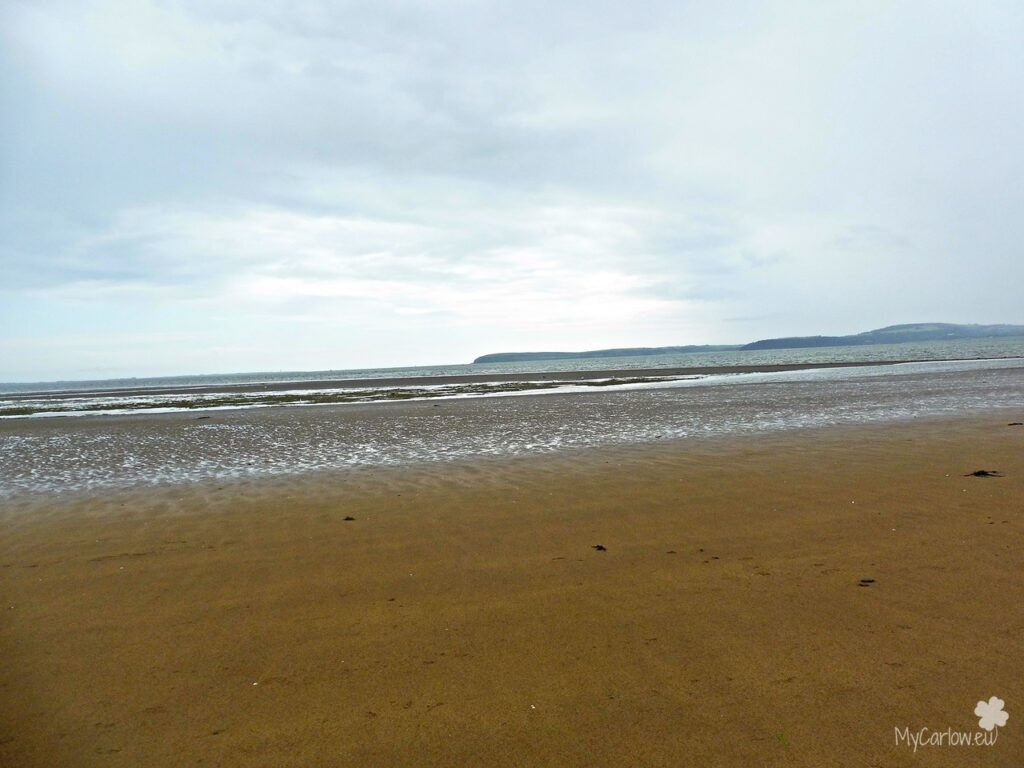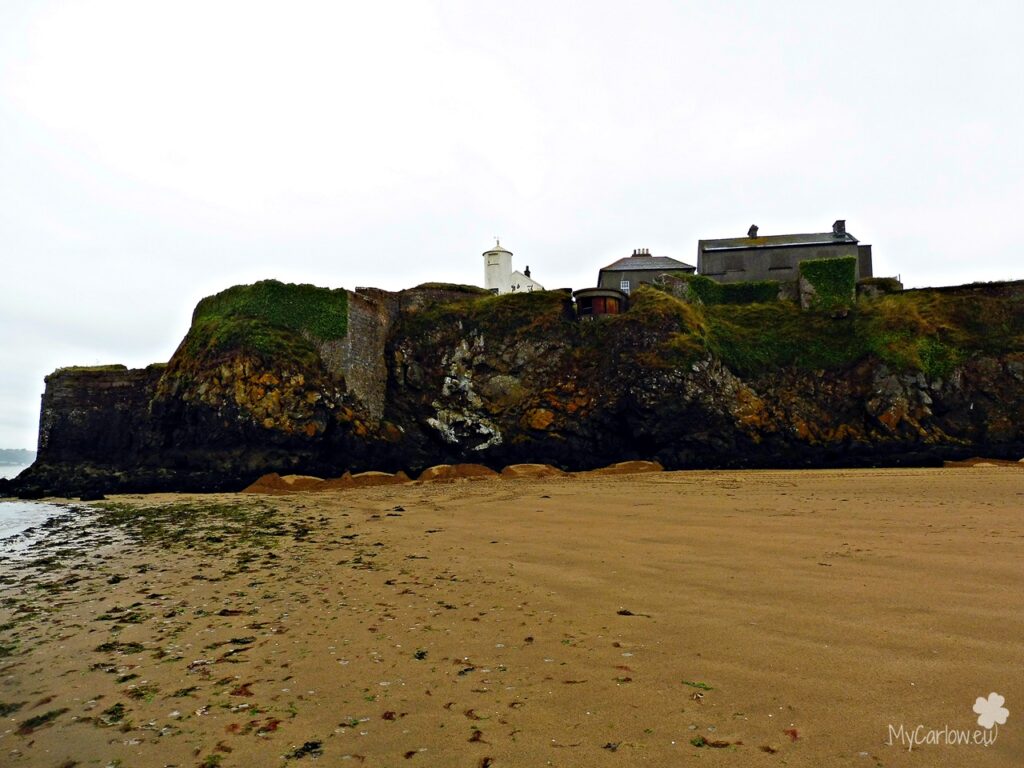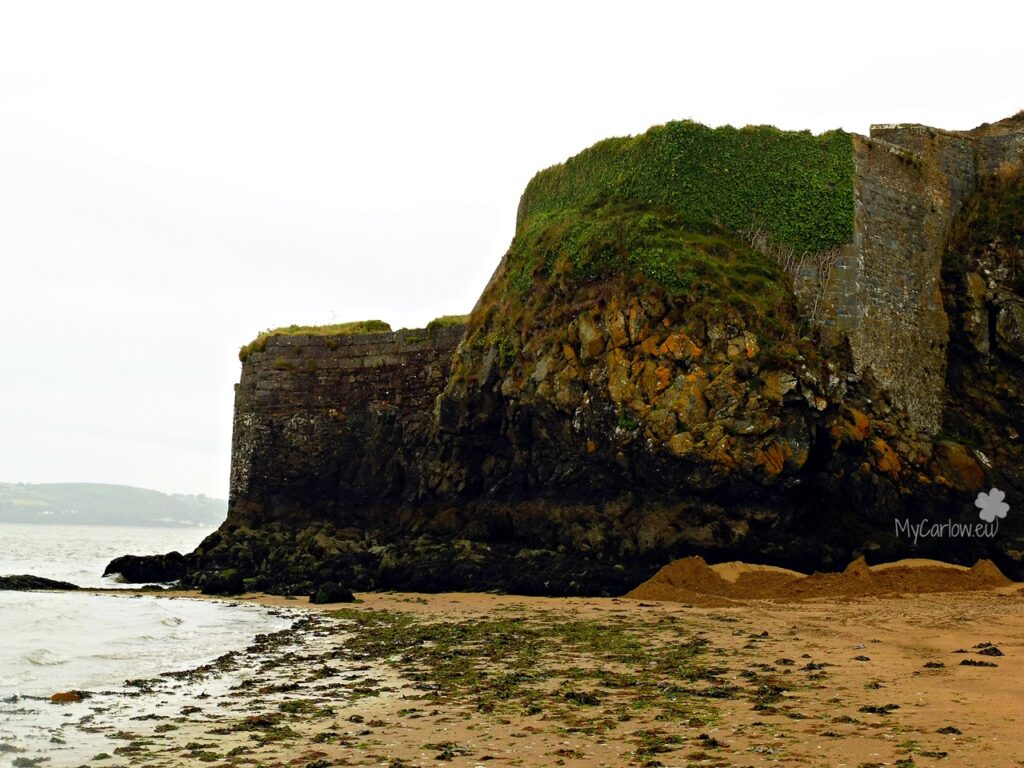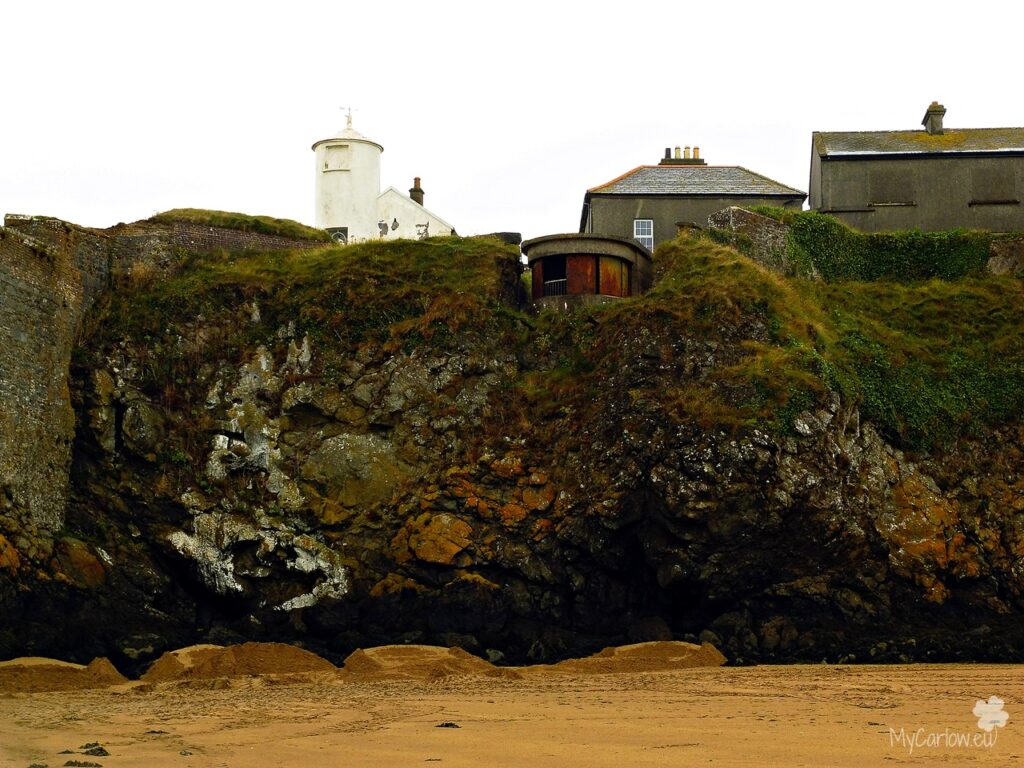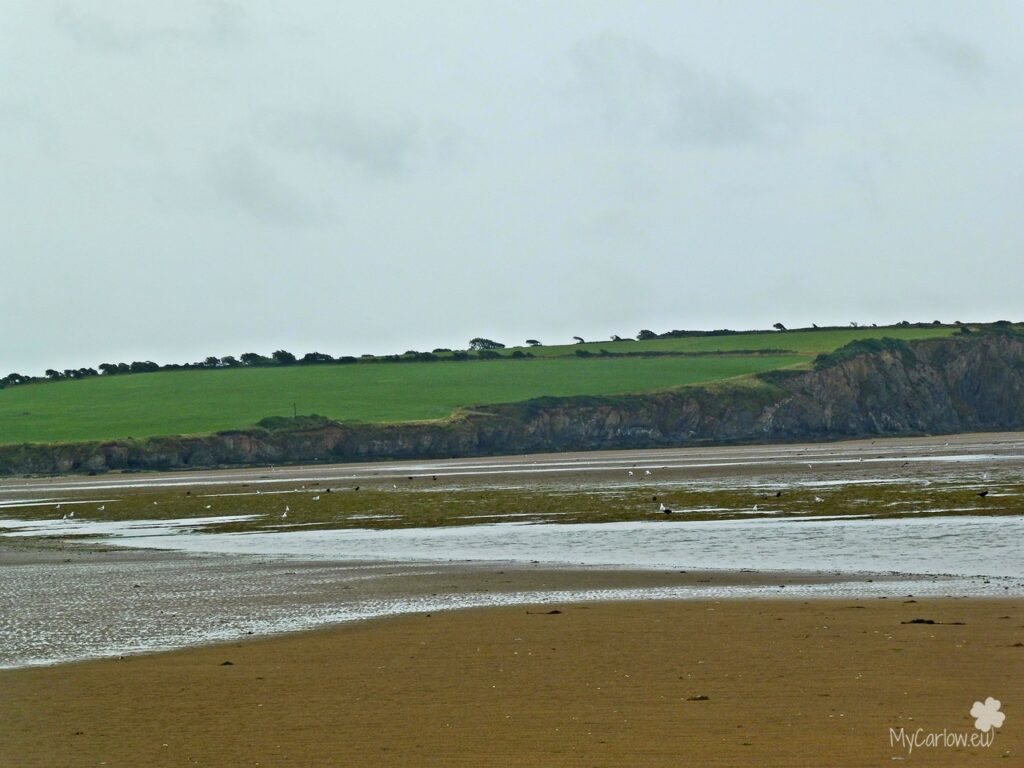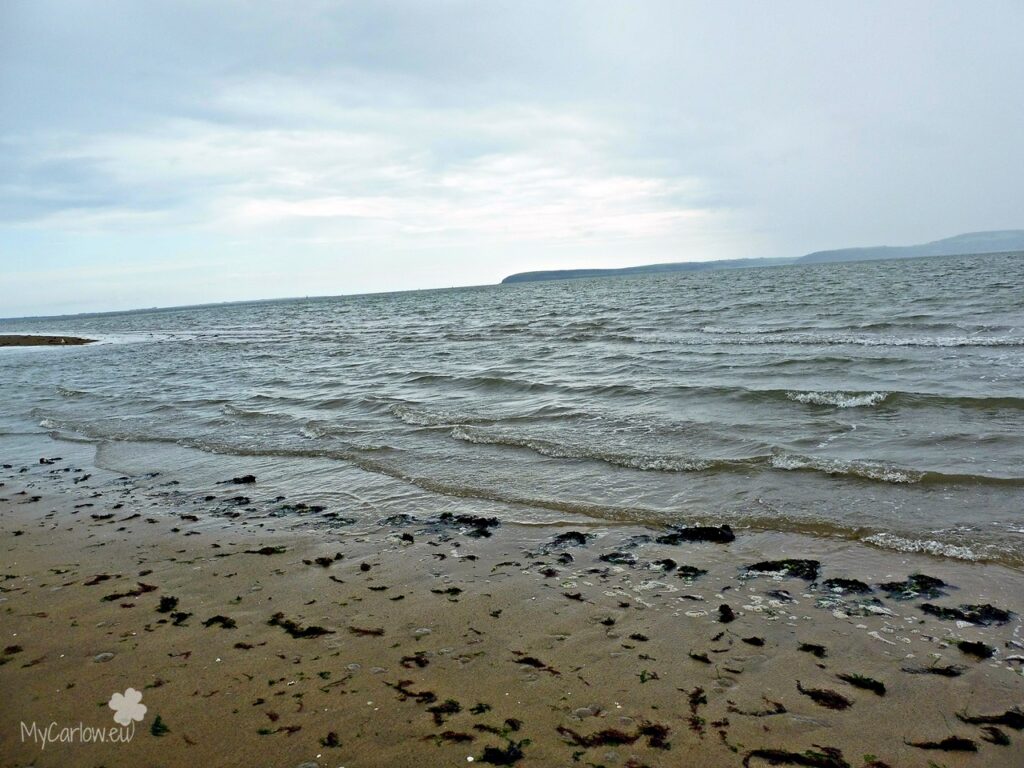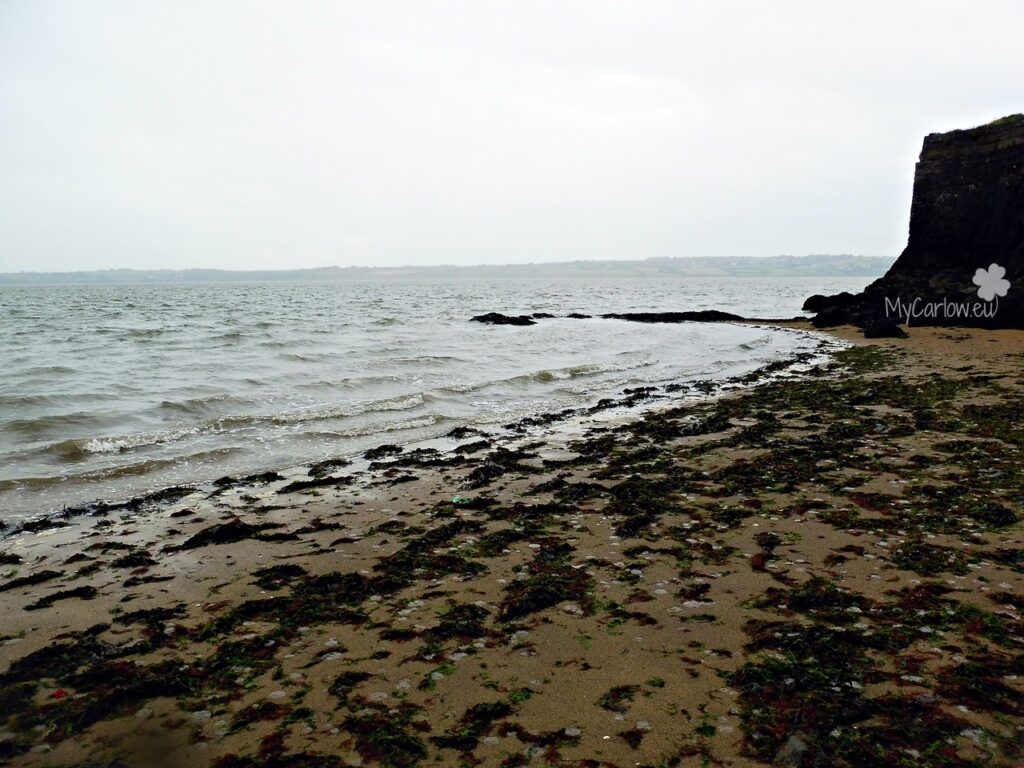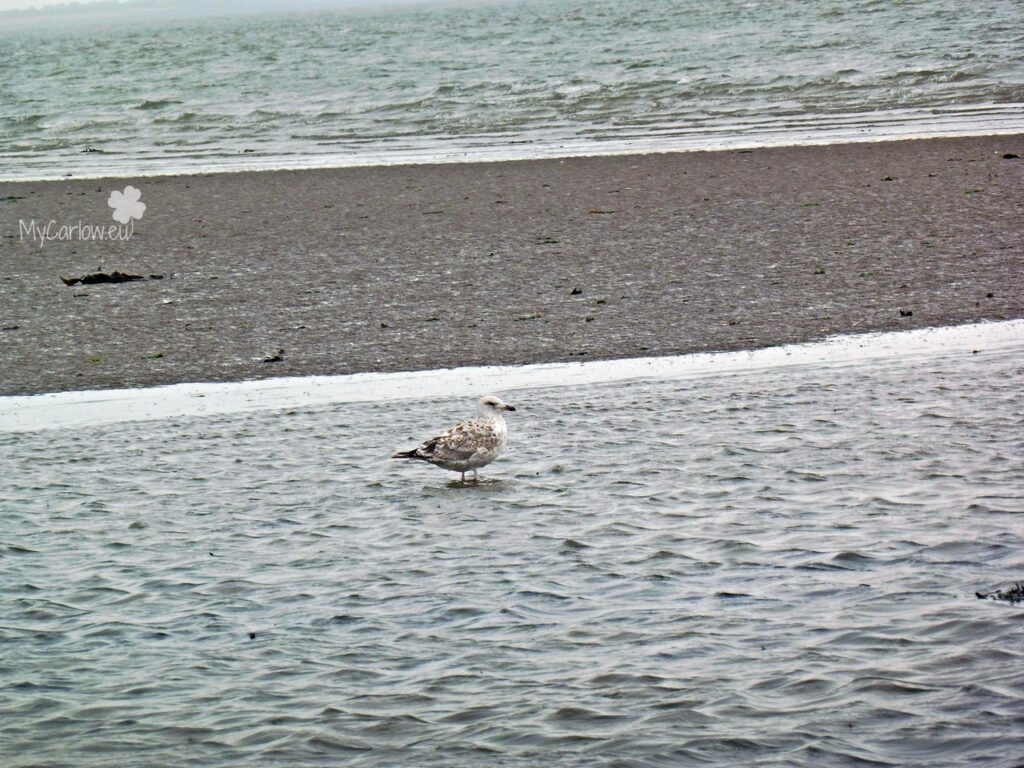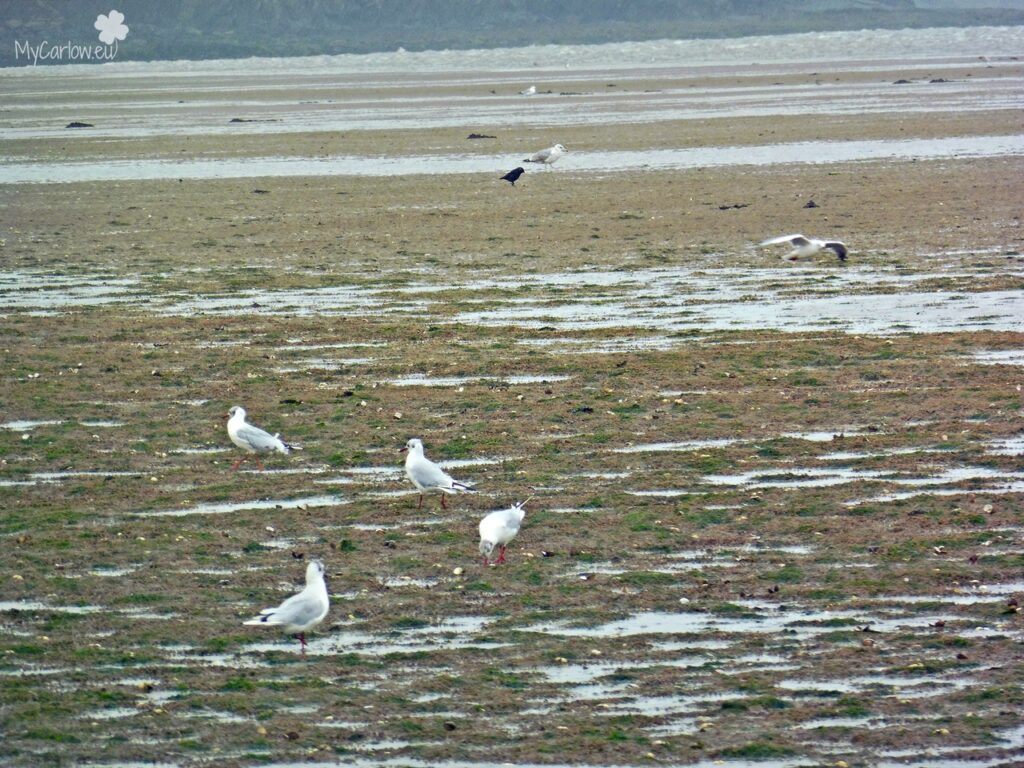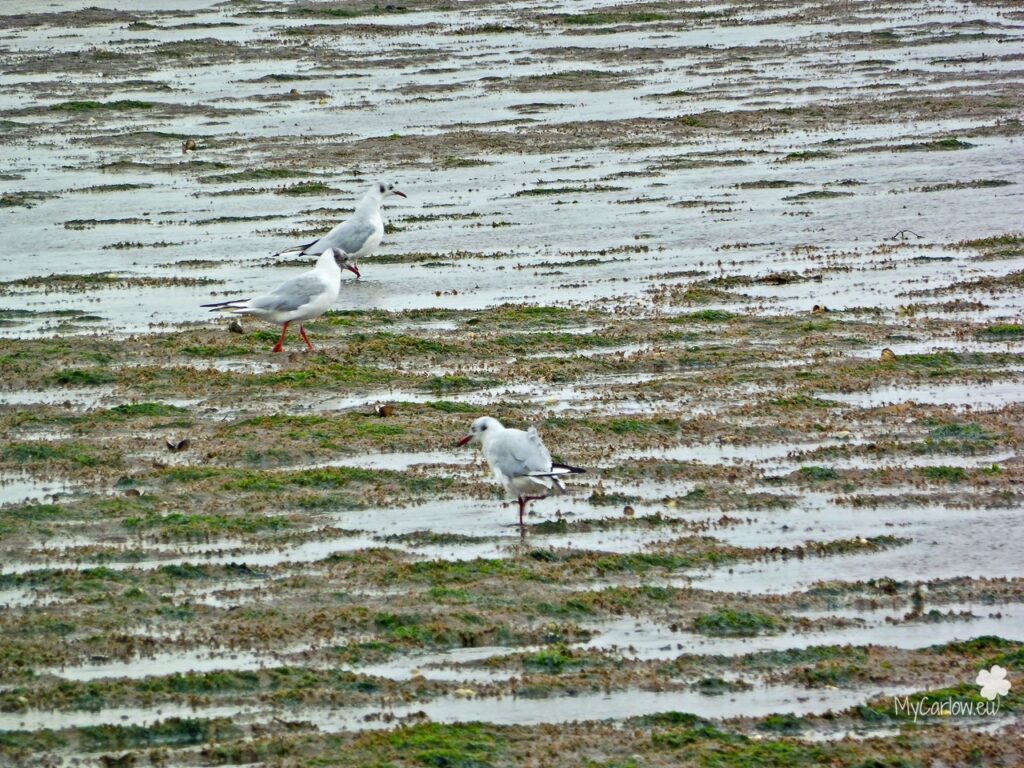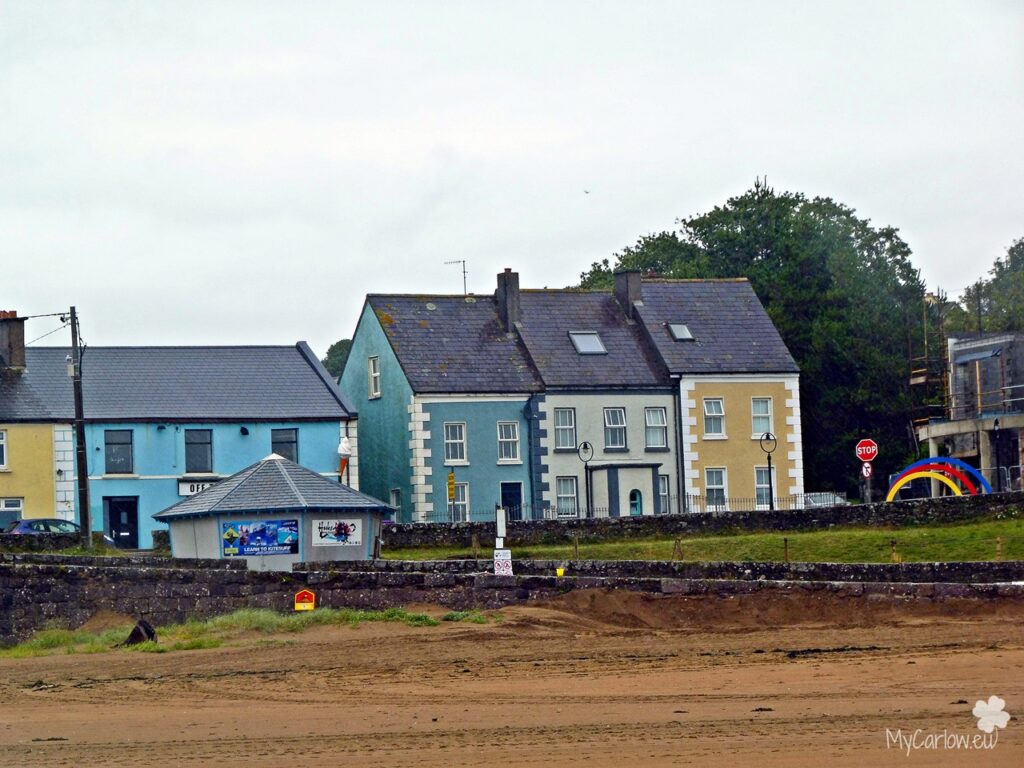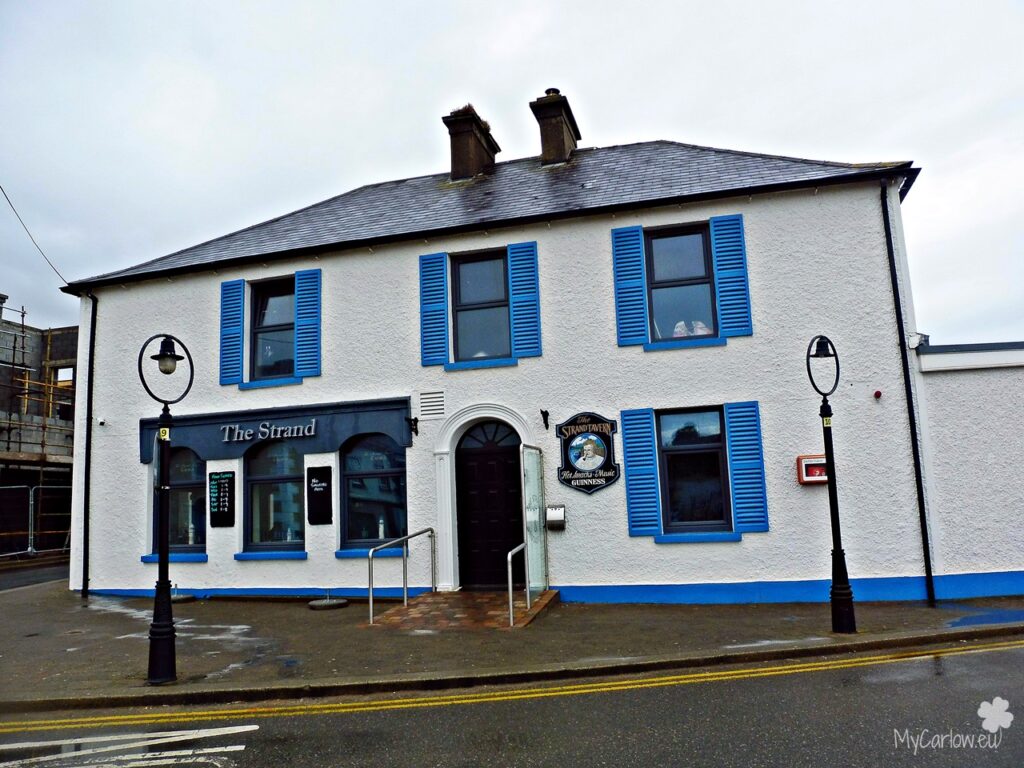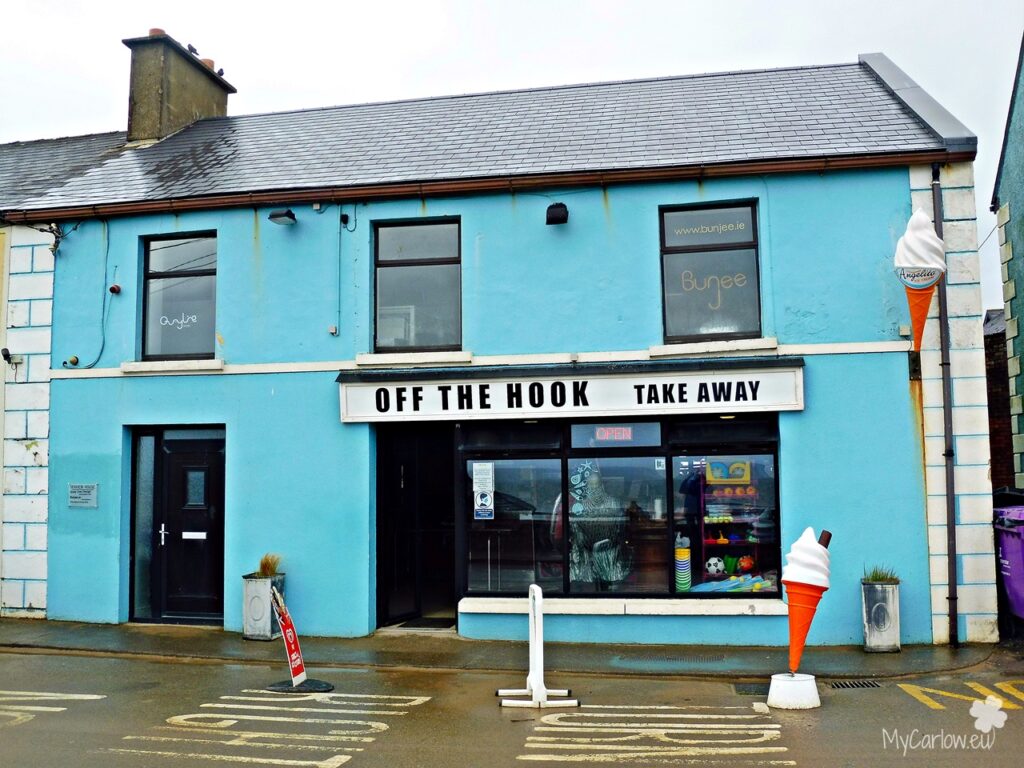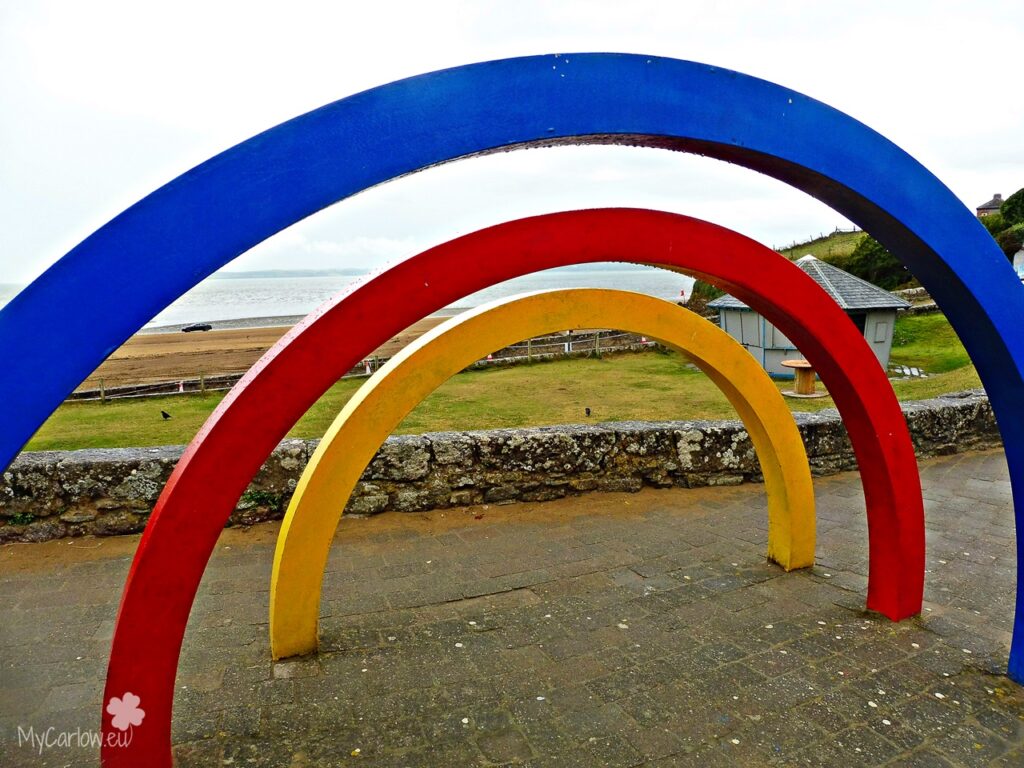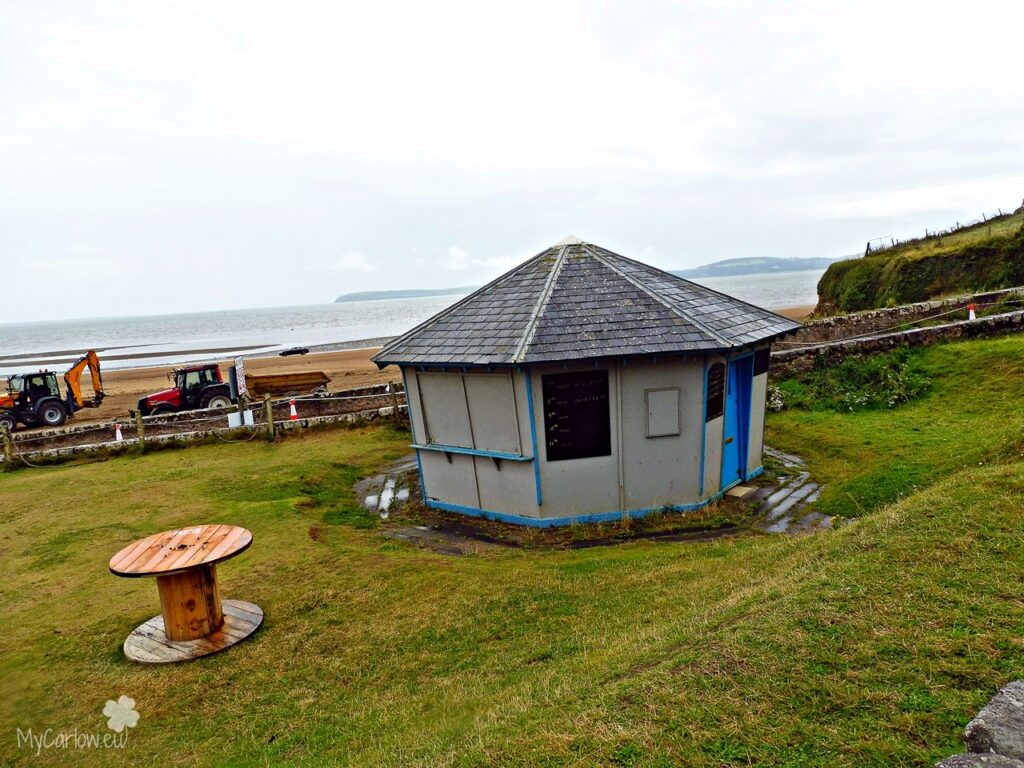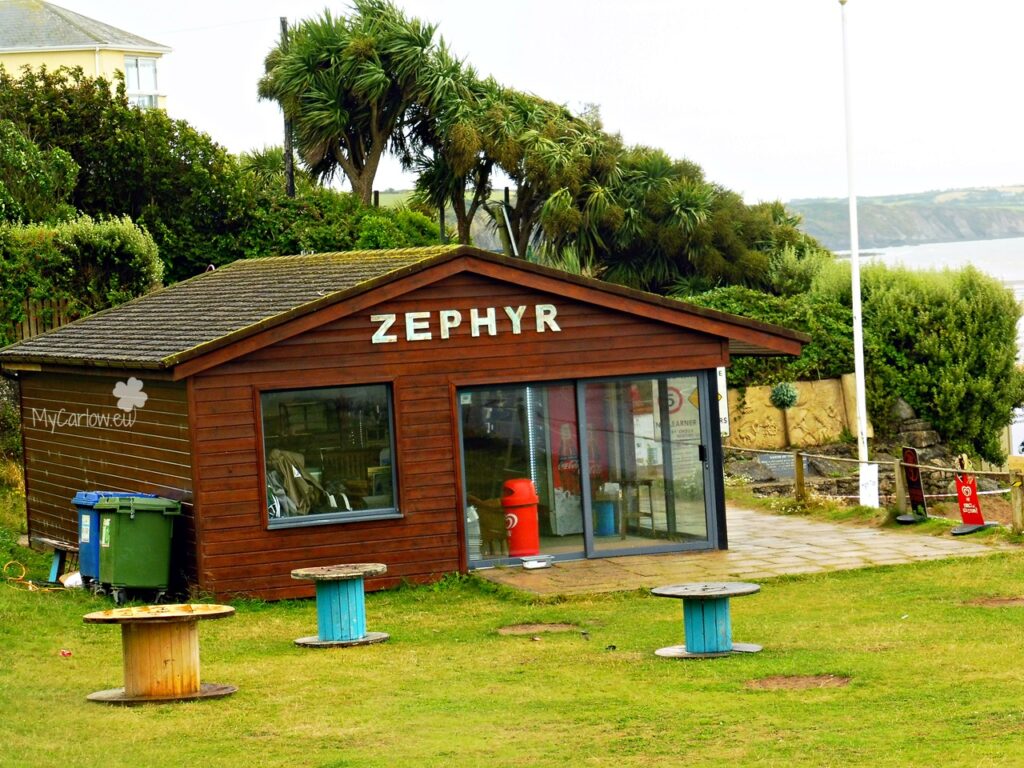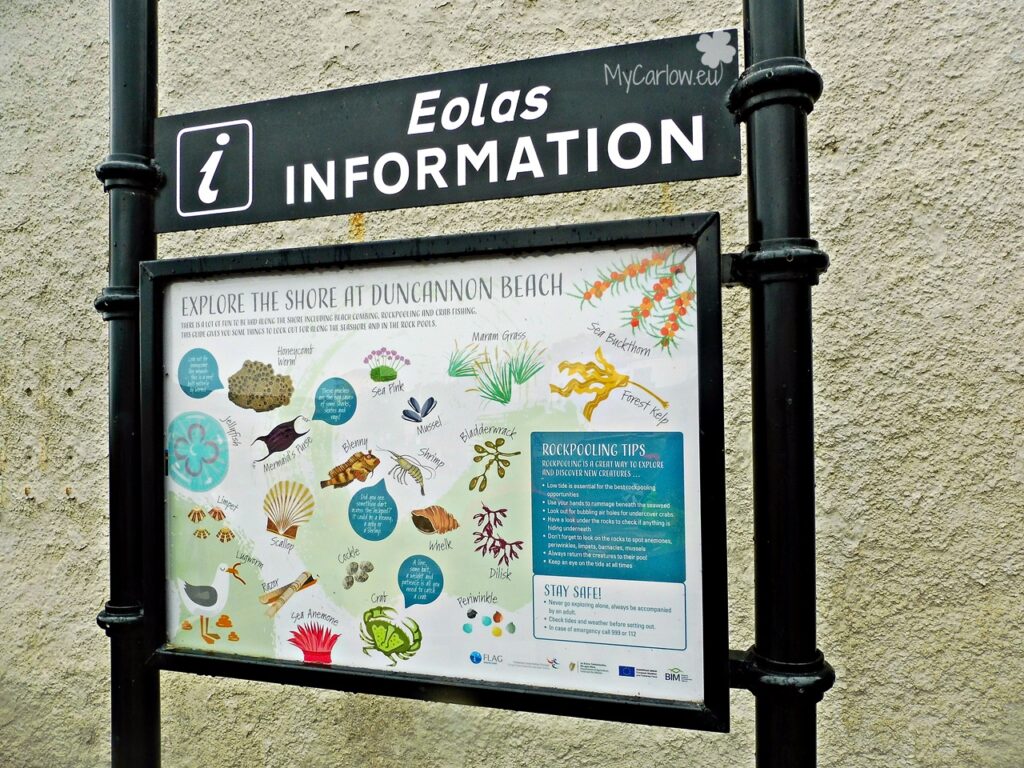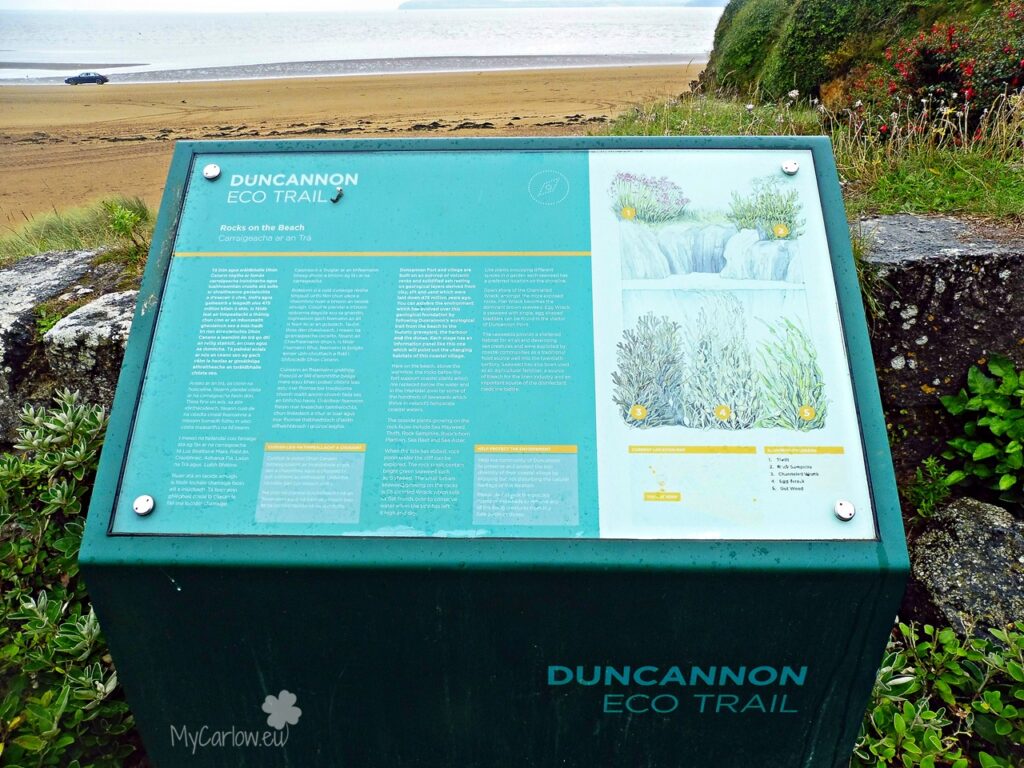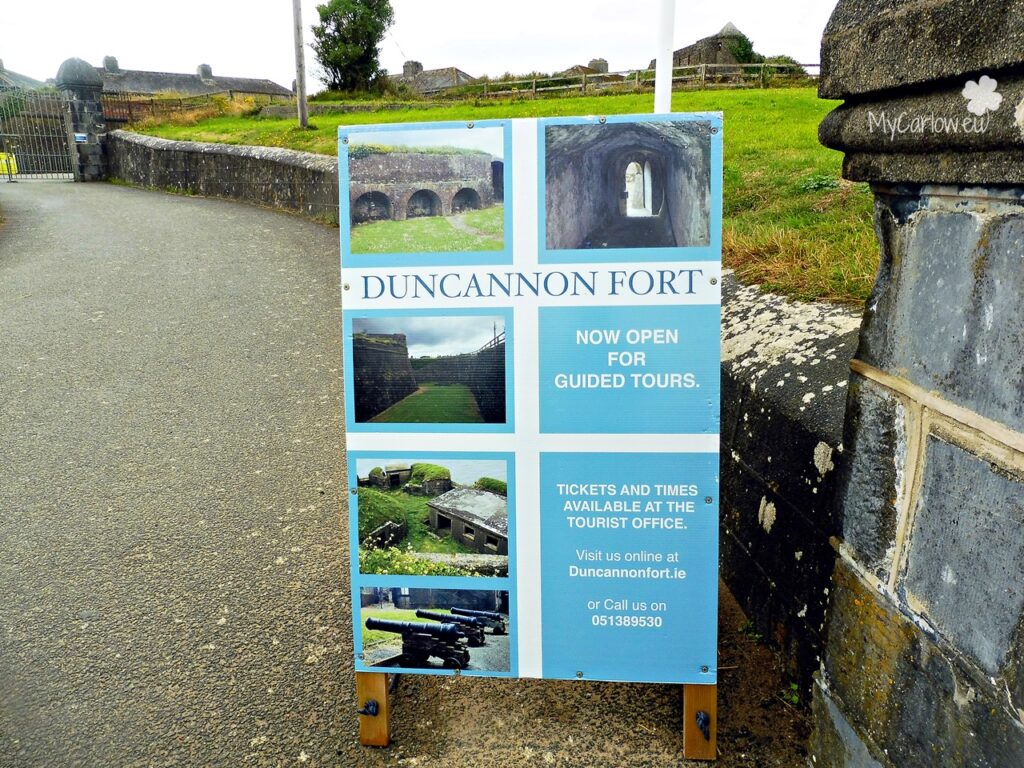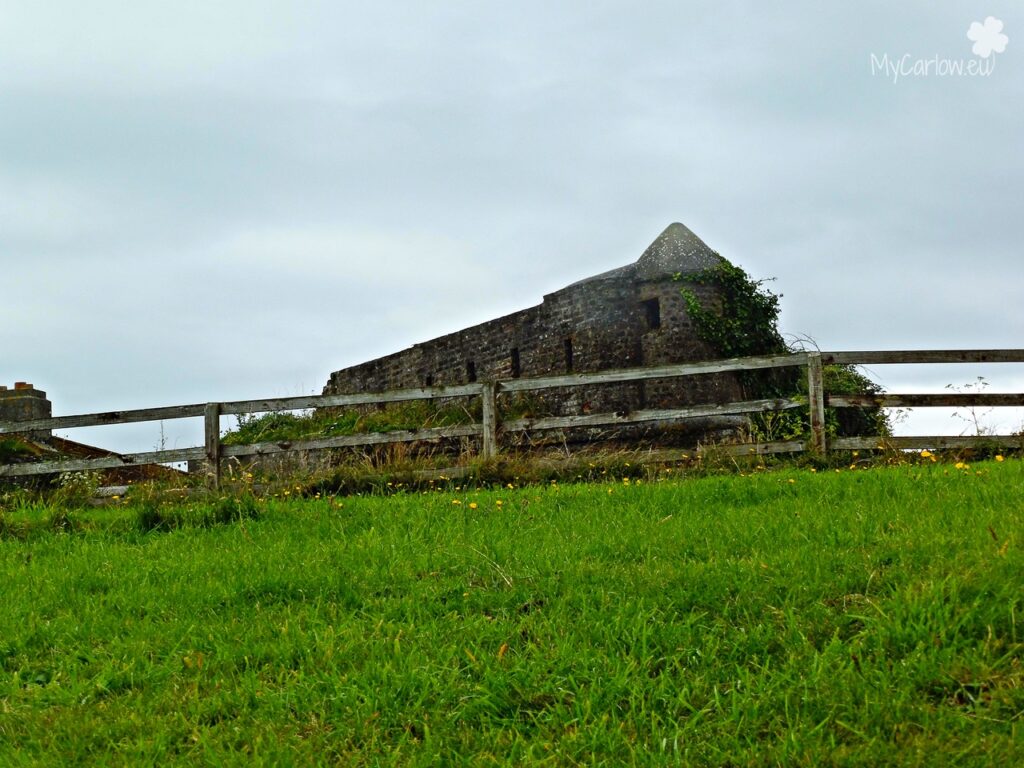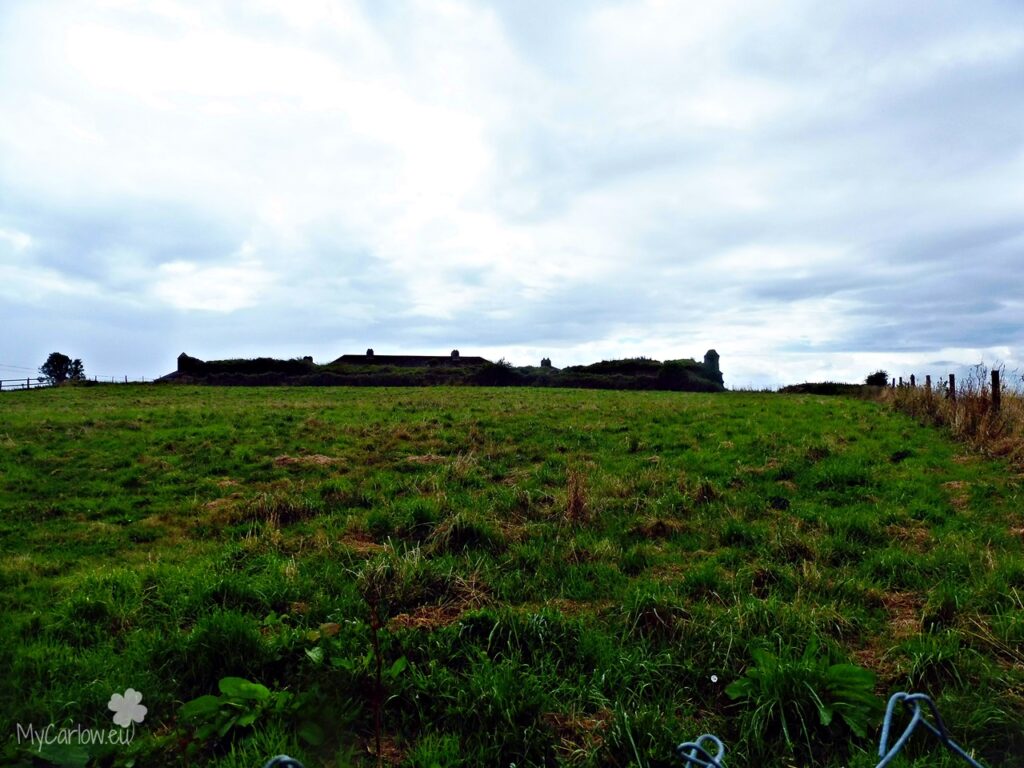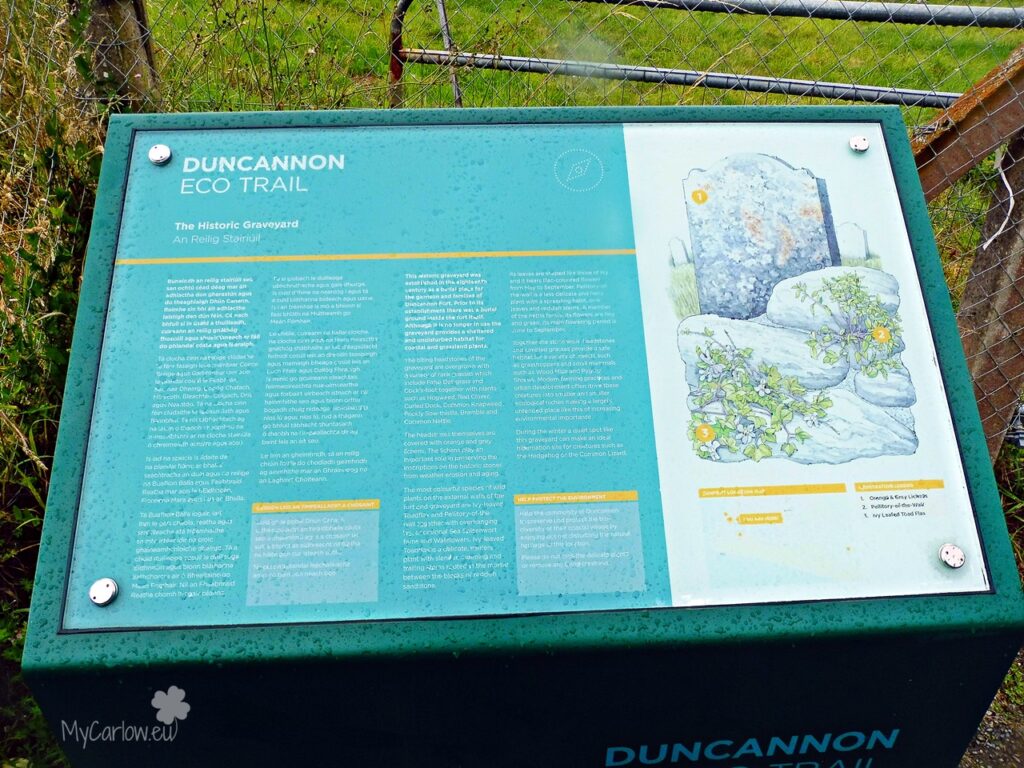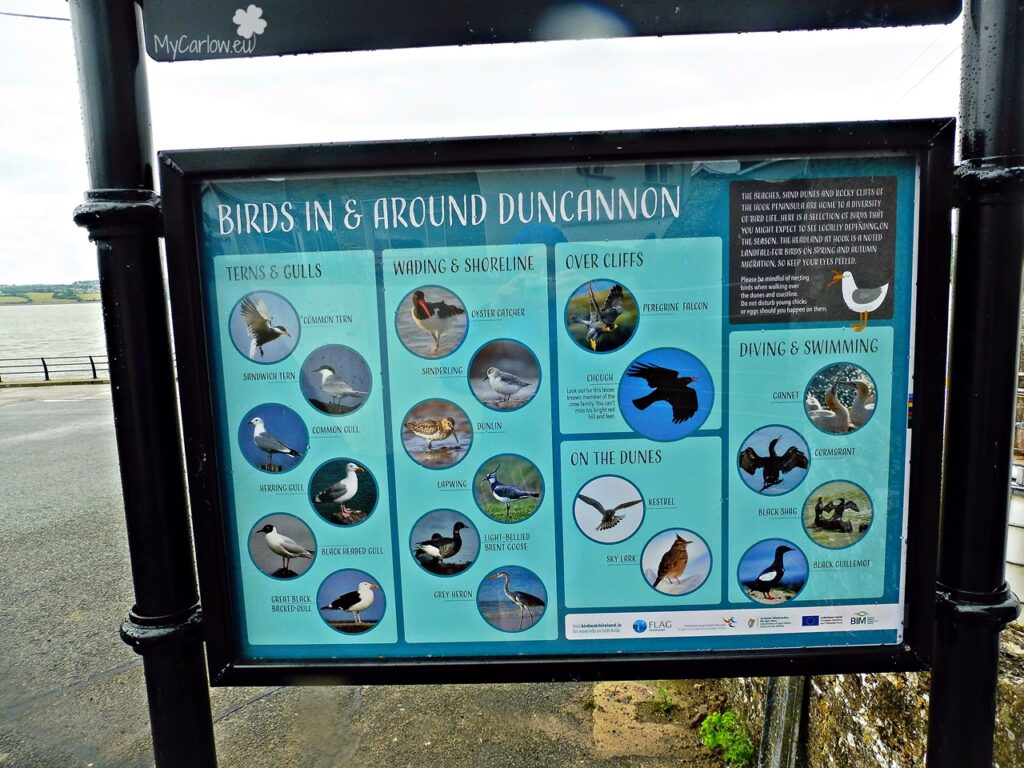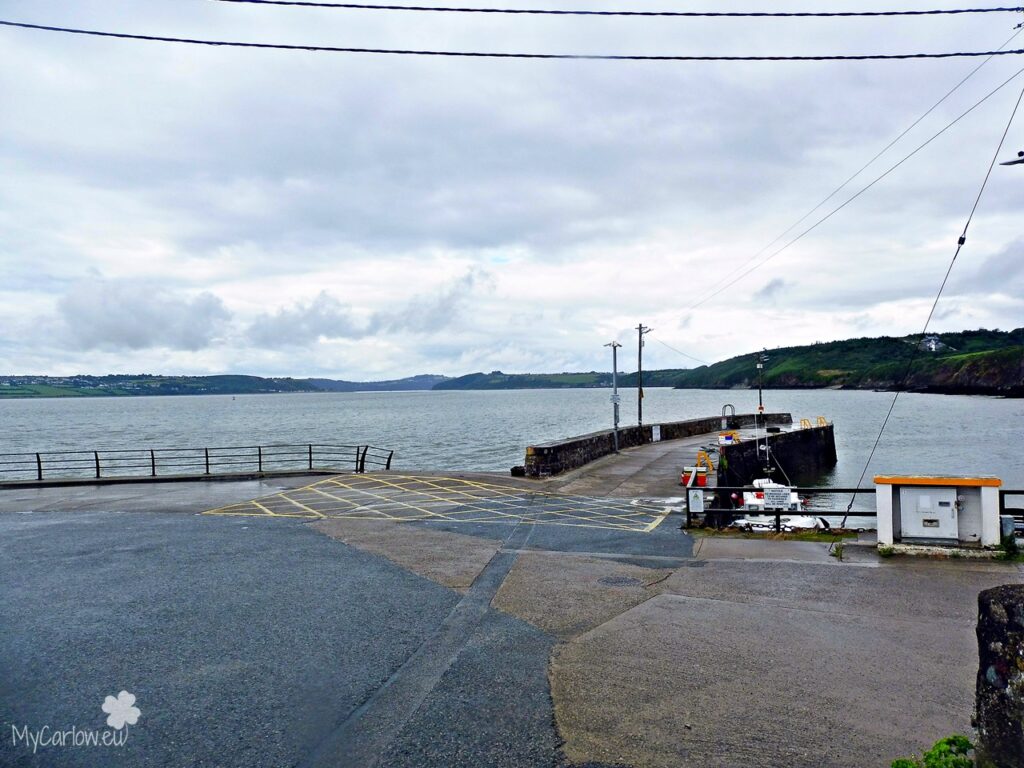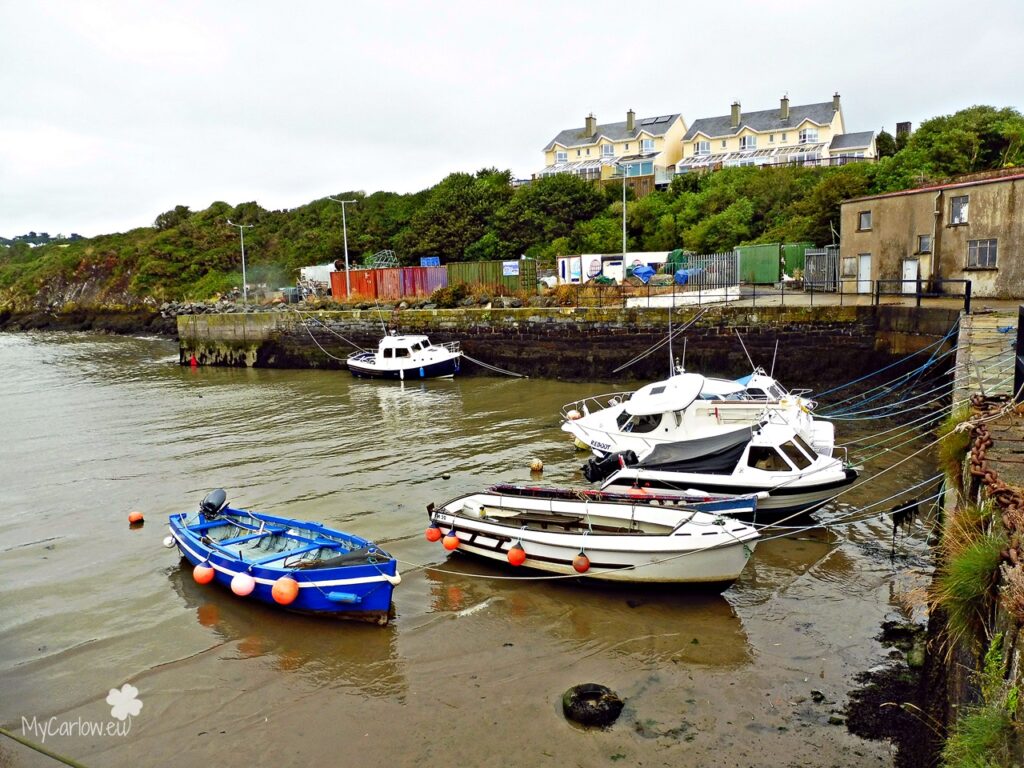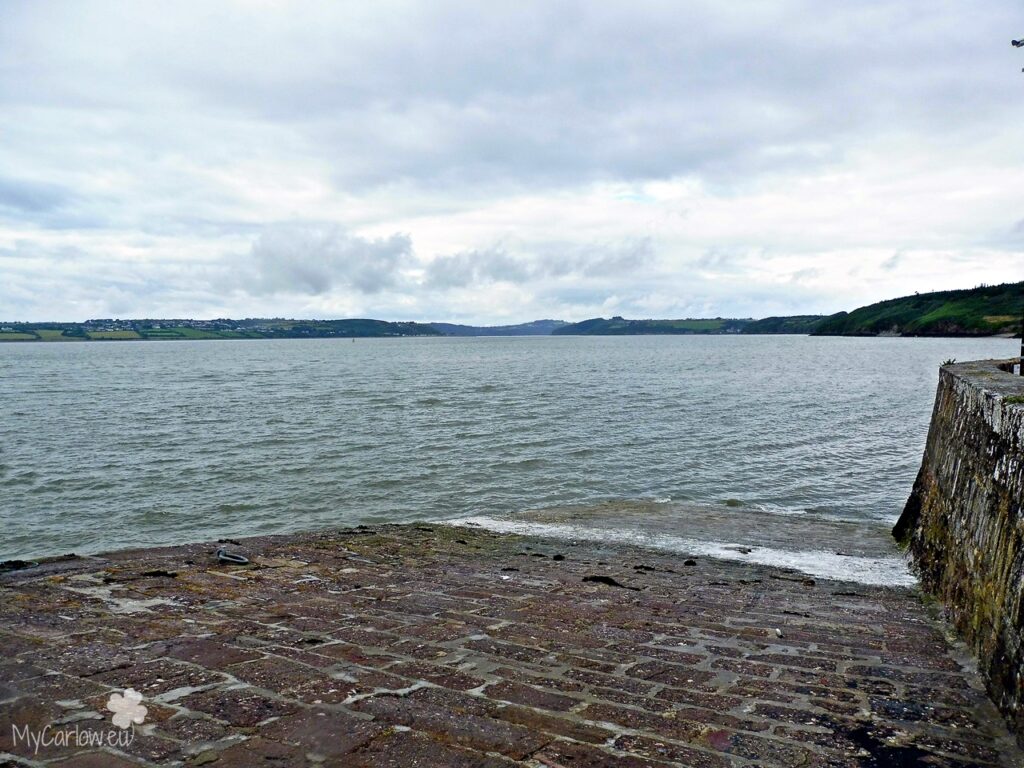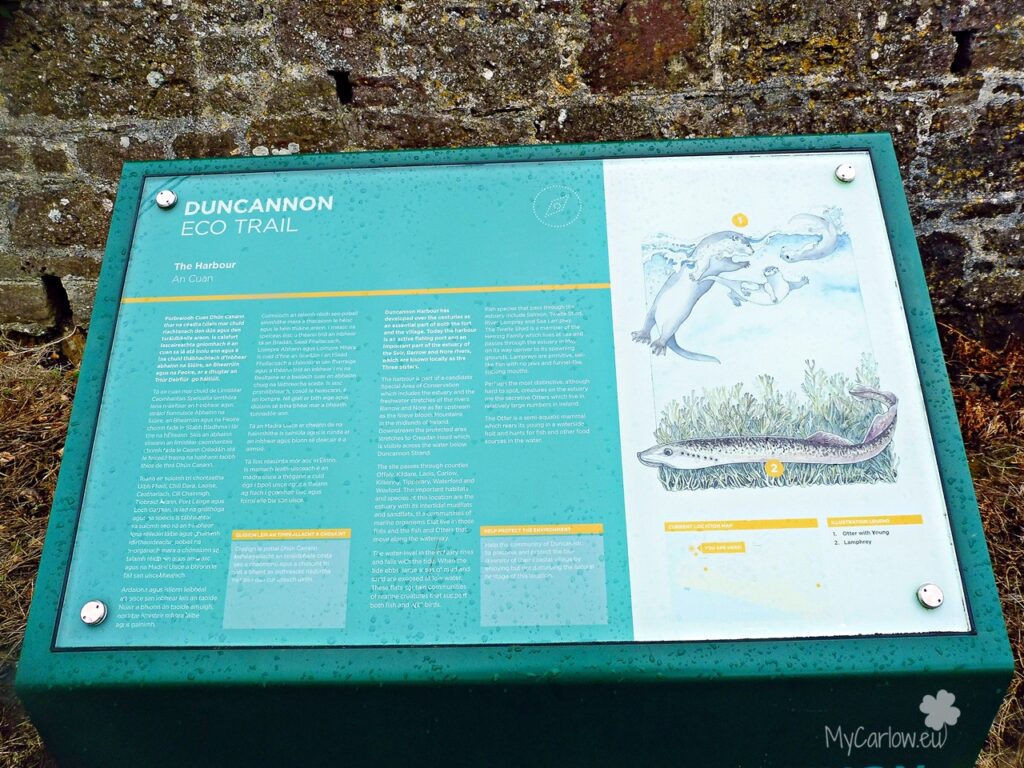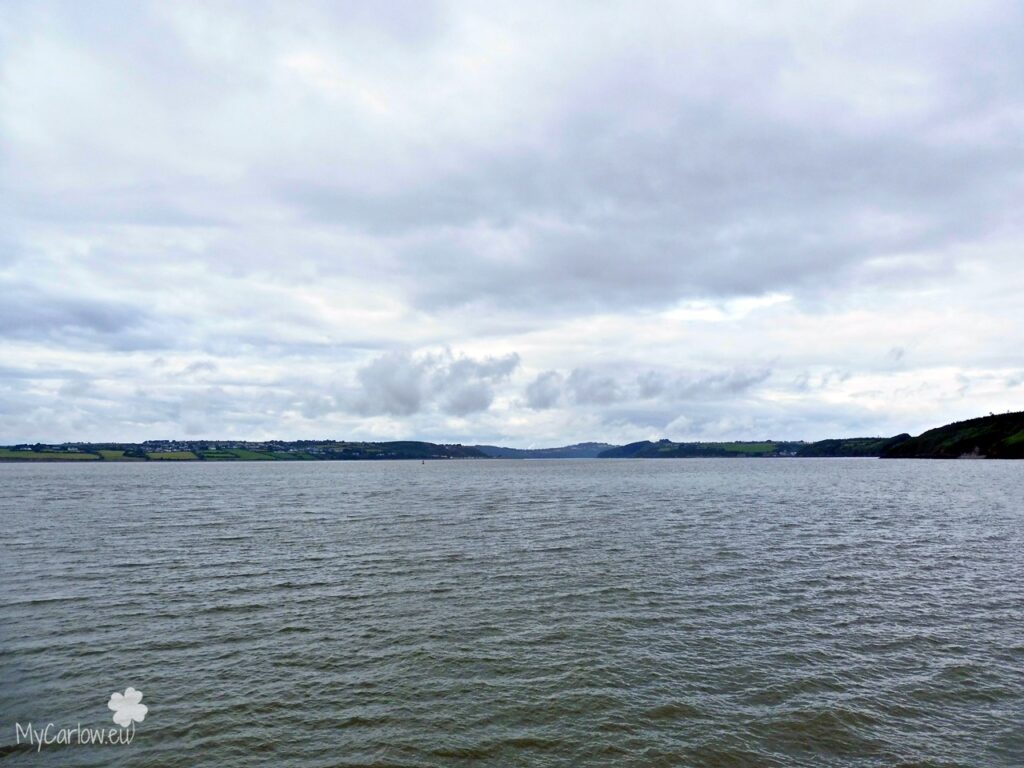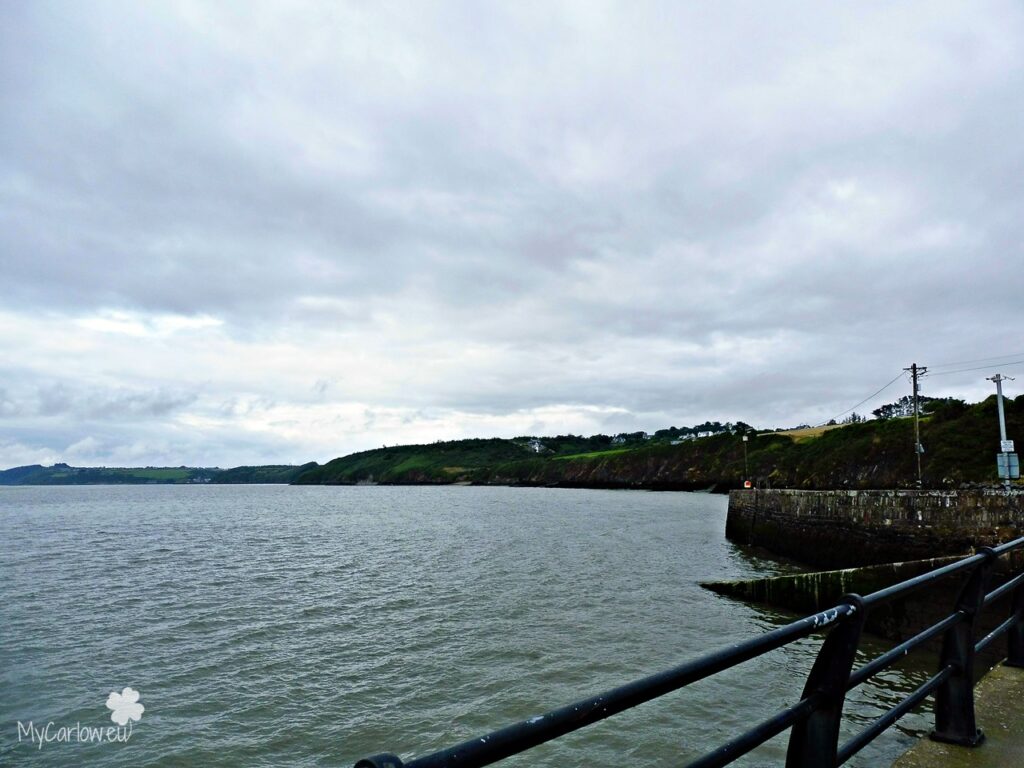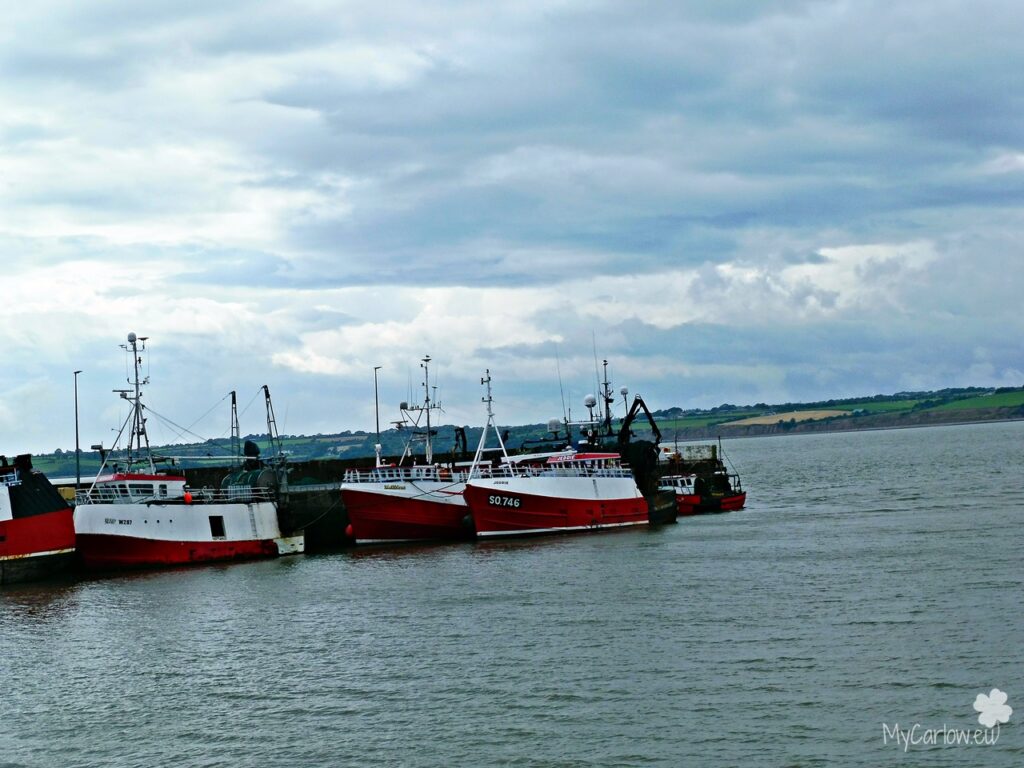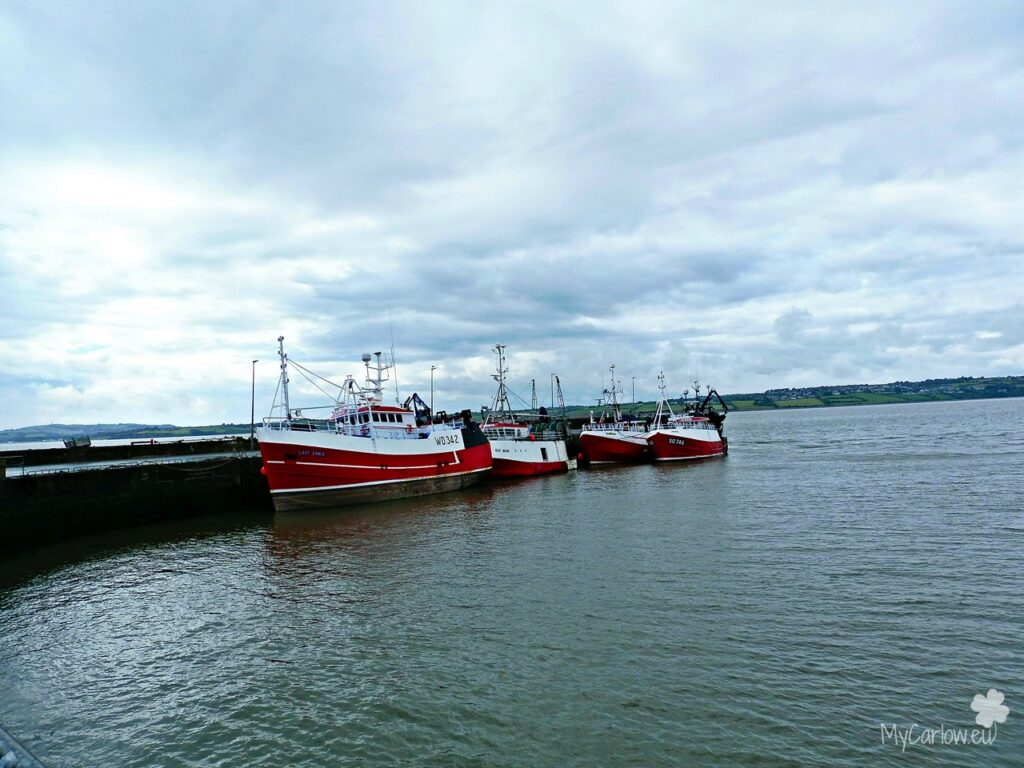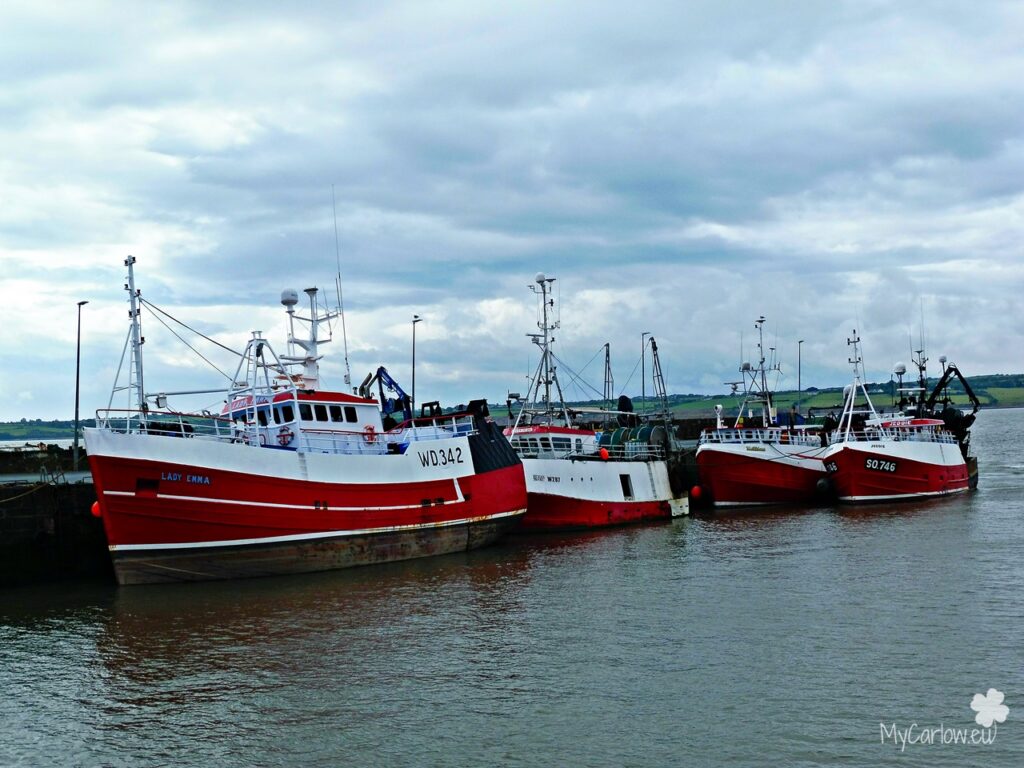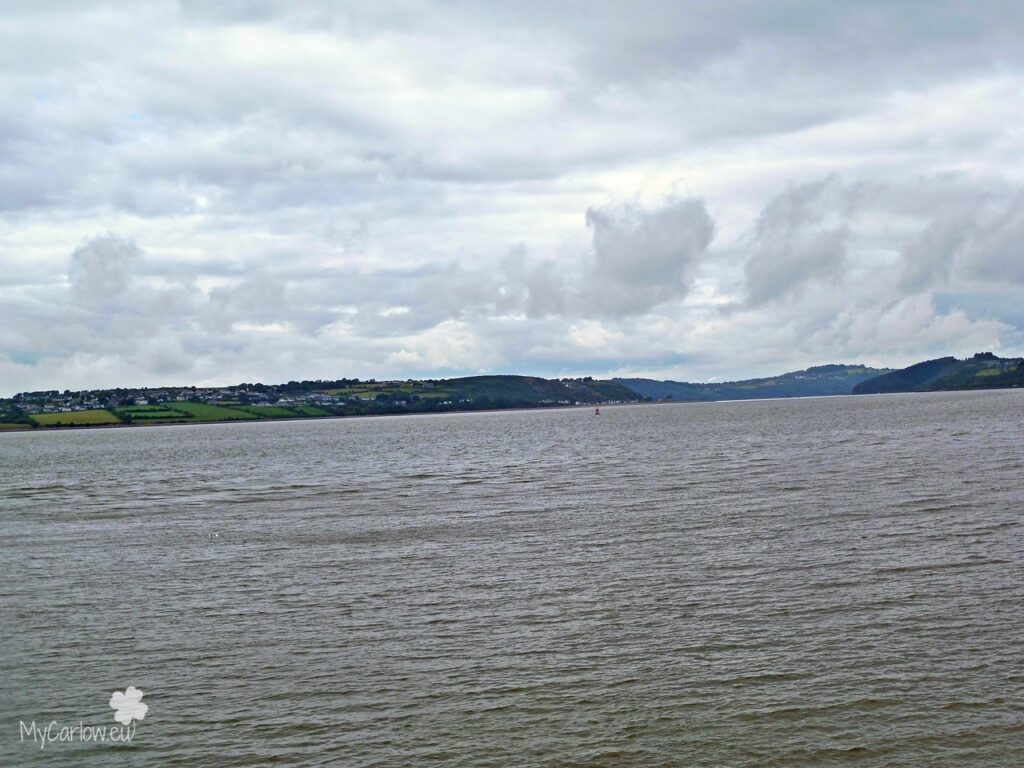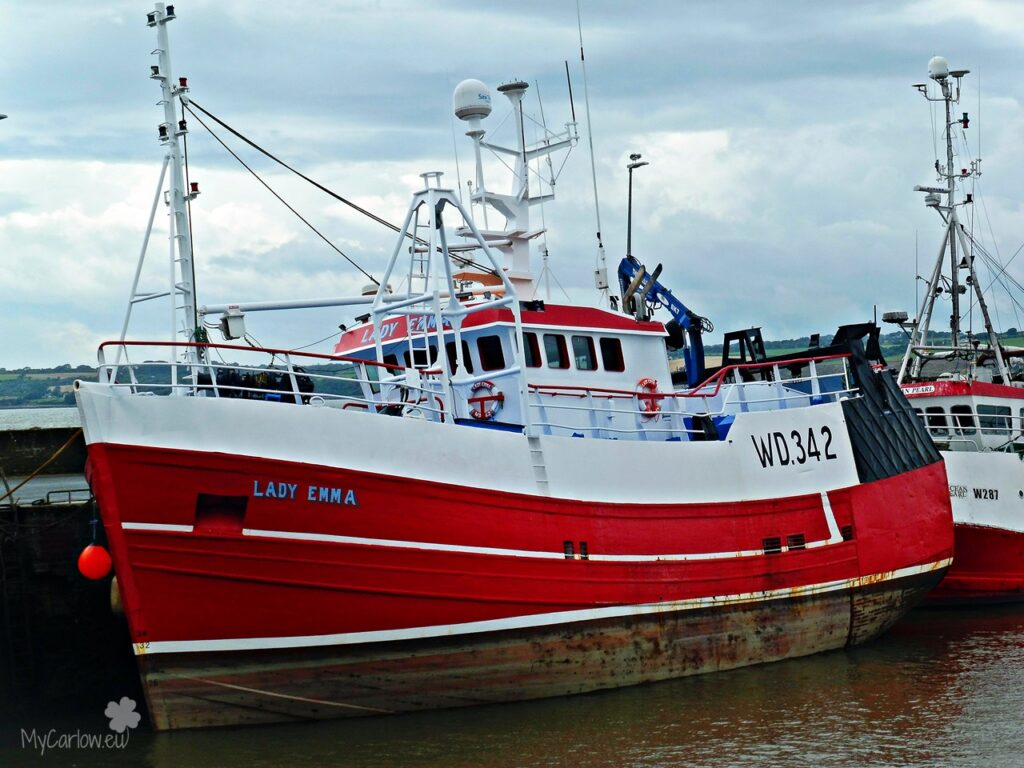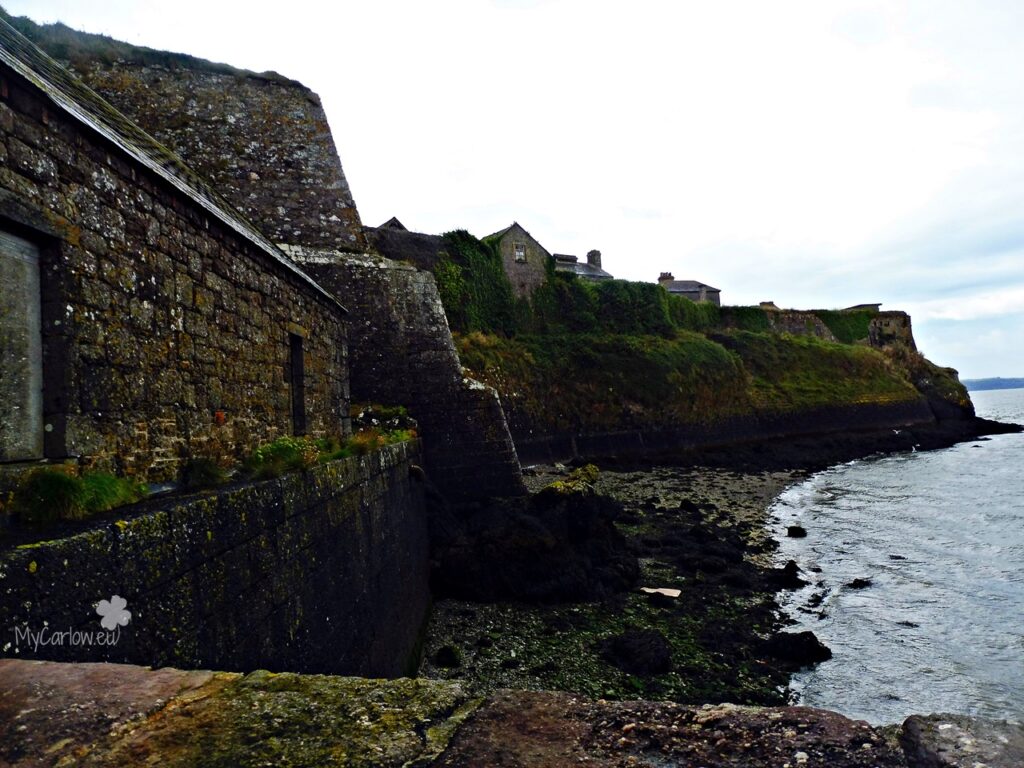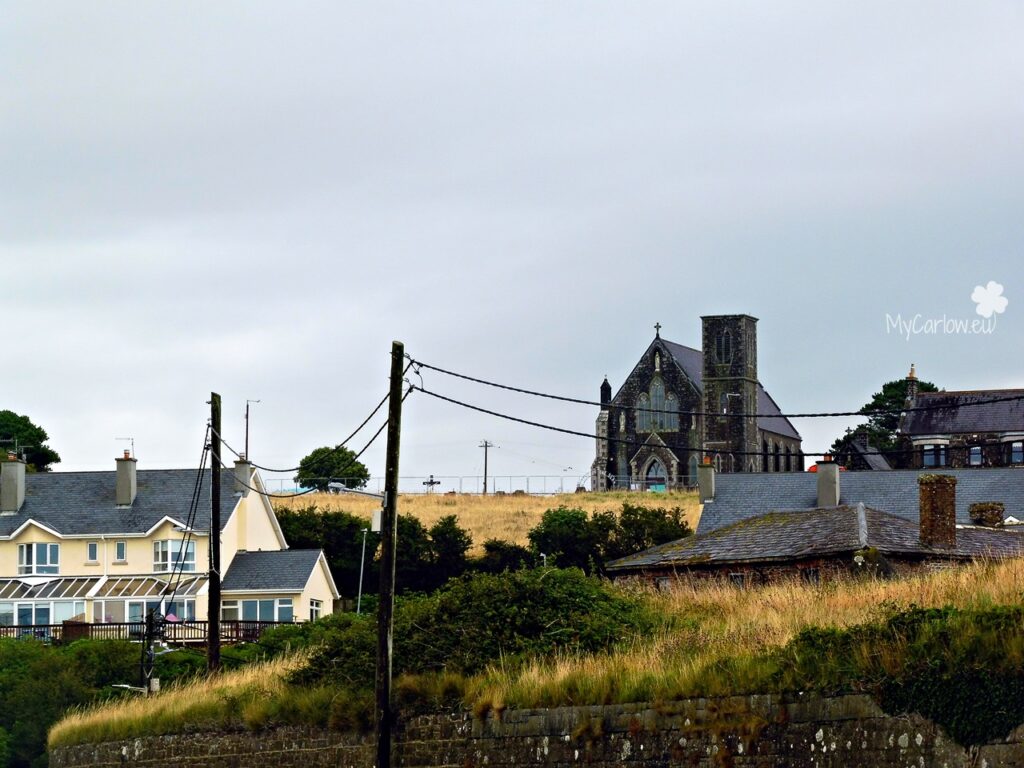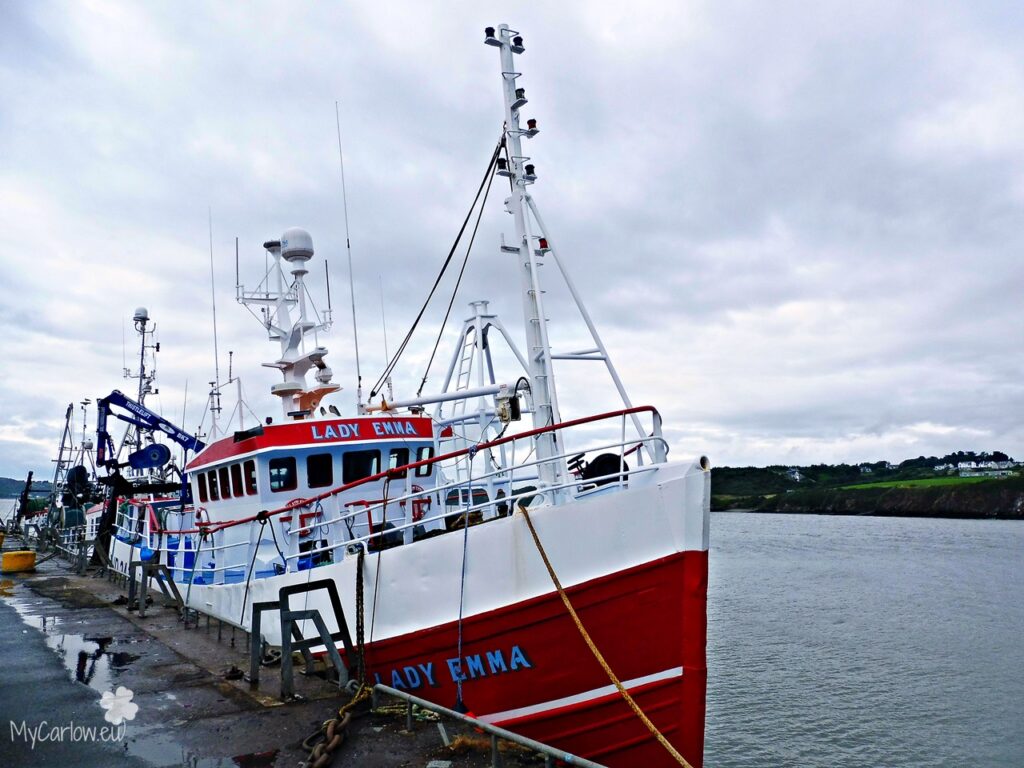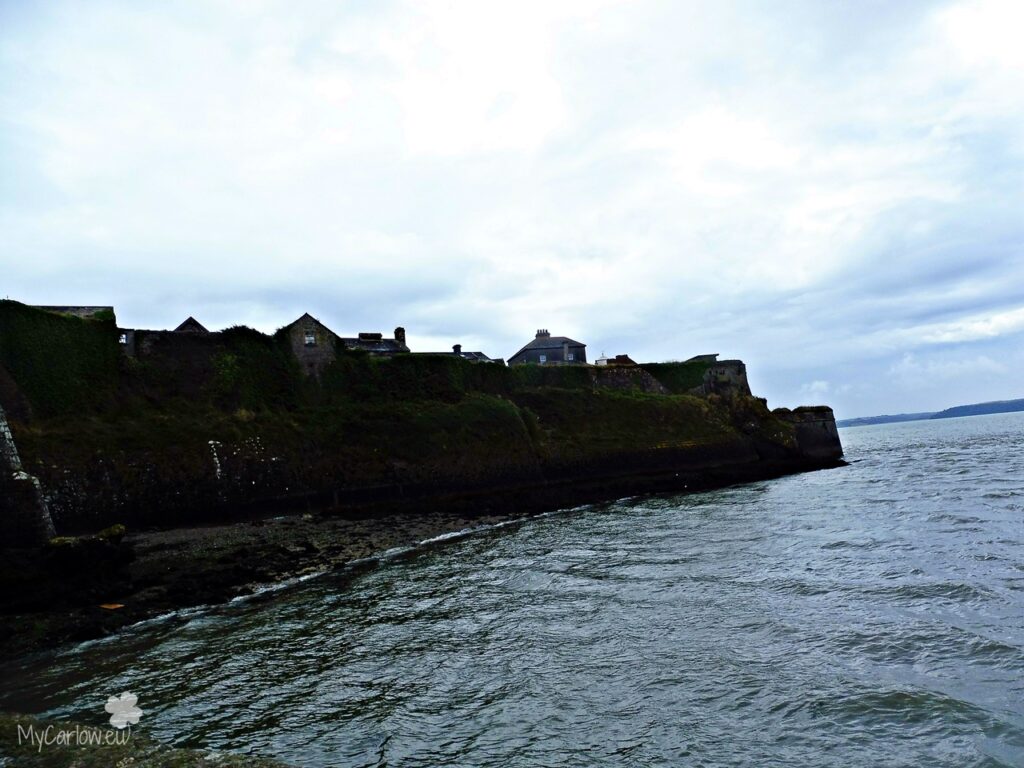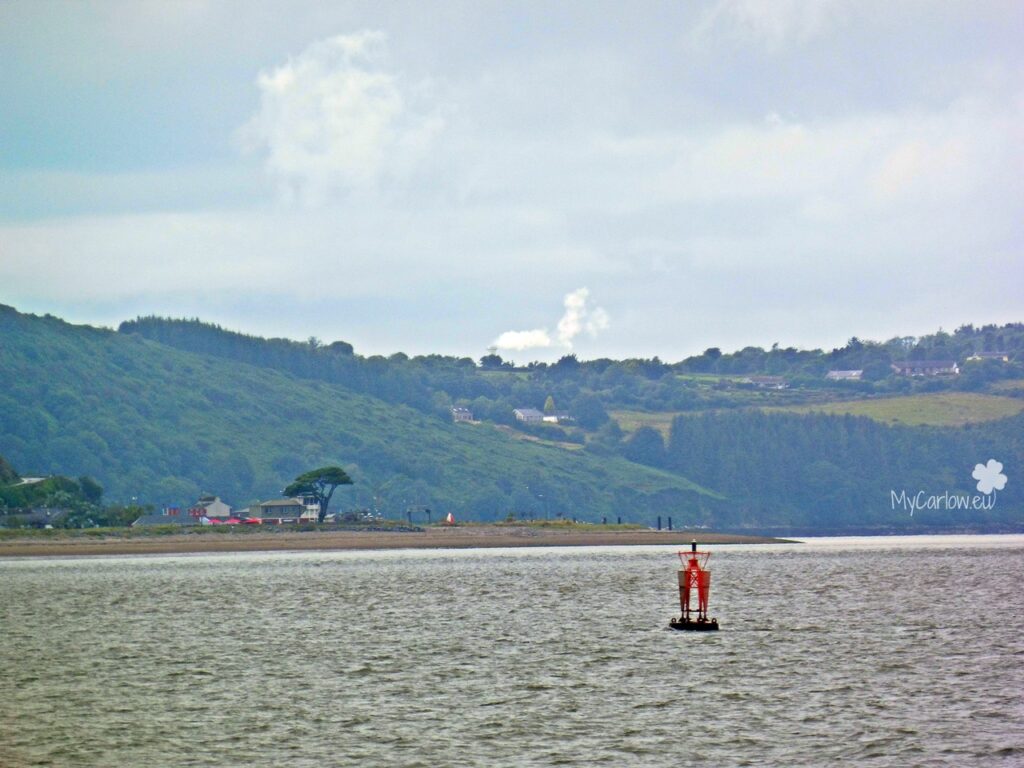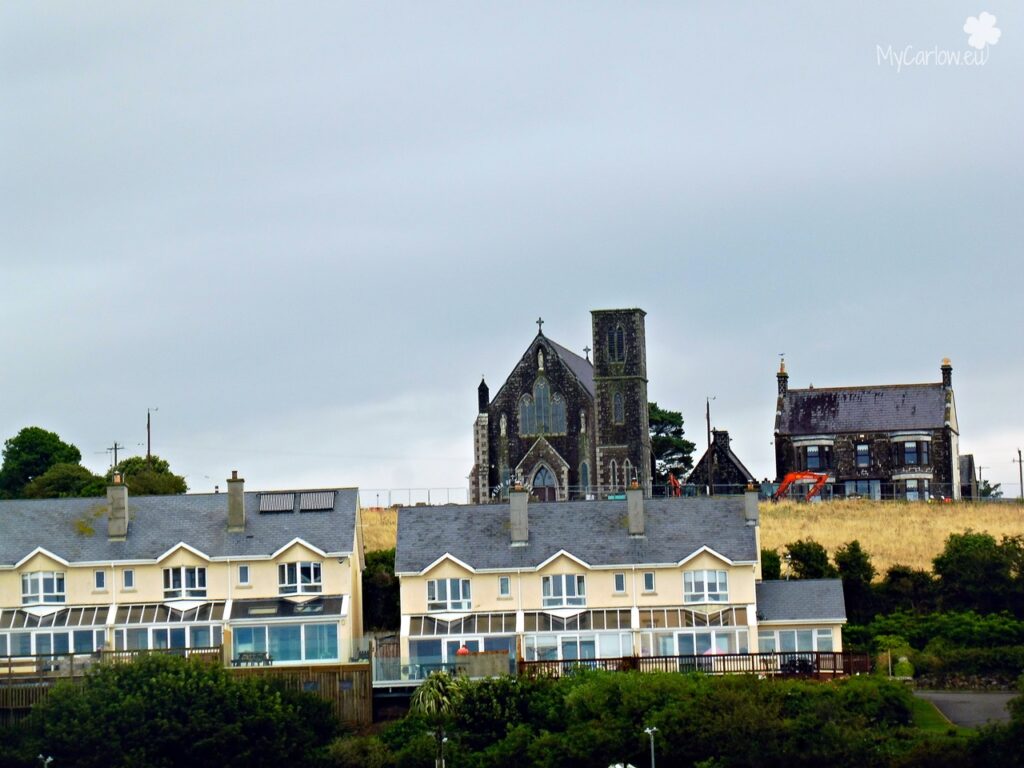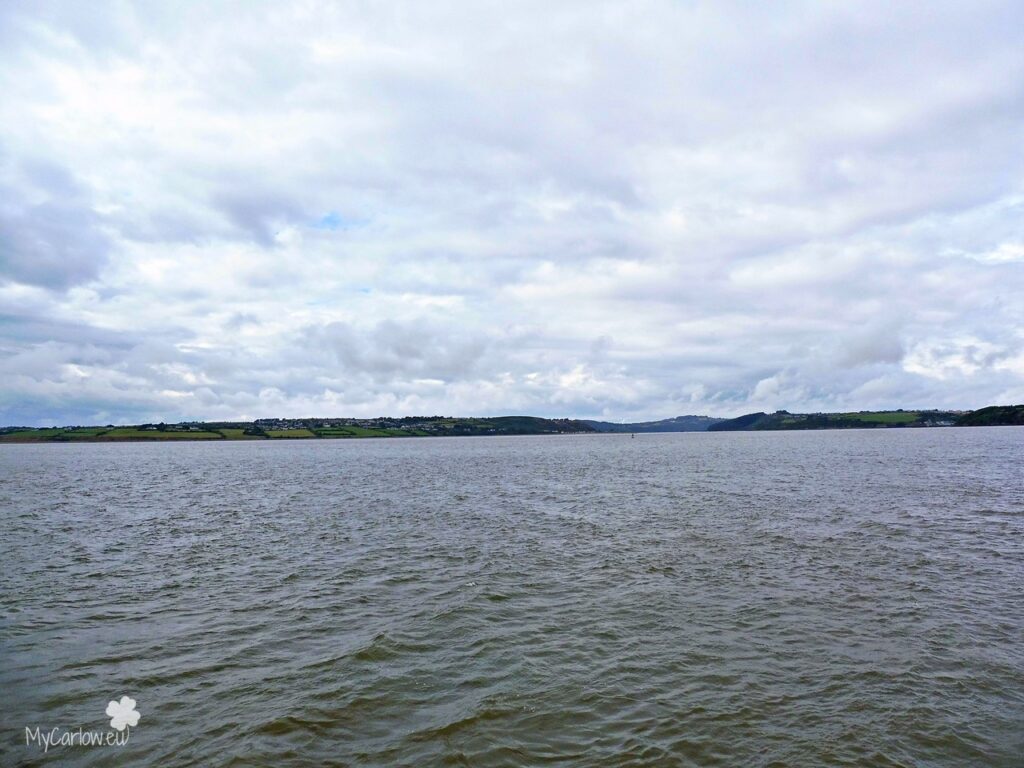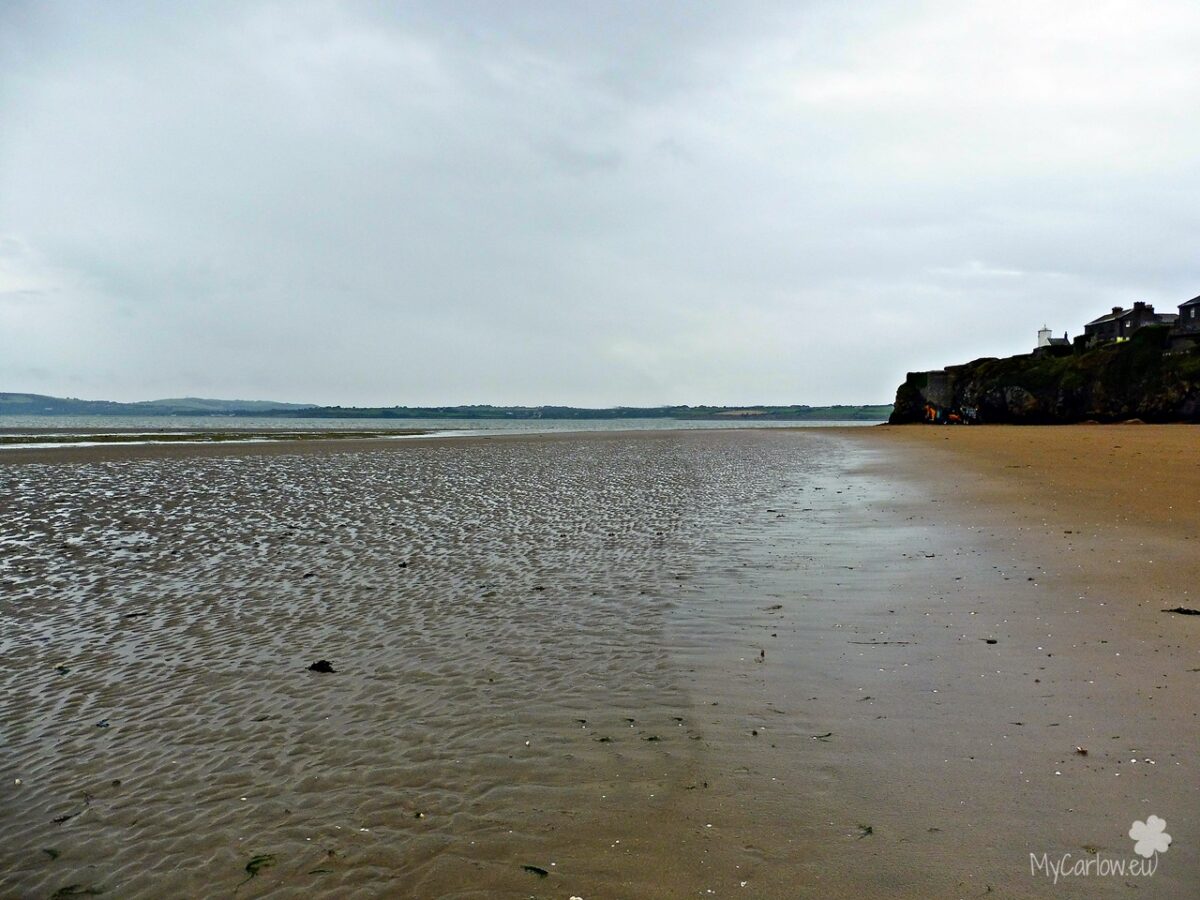
From Hook Lighthouse I traveled to visit Duncannon. One of the most unique seaside villages situated on scenic Ring of Hook drives in the southwest of County Wexford.
Bordered to the west by Waterford harbor and sitting on a rocky headland jutting into the channel is the strategically prominent Duncannon Fort which dominates the village.
Duncannon is primarily a fishing village, that also relies heavily on tourism.
Duncannon Beach is a mile-long (1.6 km) golden, sandy beach, which hosts the Sand Sculpting Festival annually.
Unfortunately, the weather was not good the day I went there. It was rainy so the beach was completely empty. The sand was really gold and lot of birds on the beach.
There are great views from the beach of Hook Head and, across the river, the Waterford coastline. Just a short stroll from the beach is Duncannon Fort.
According to legend, the settlement at Duncannon dates back to the time of Fionn mac Cumhaill and the Fianna in the 3rd century AD.
The name ‘Duncannon’ comes from old Irish and means ‘the fort of the son of Conan’, which points to the fact that a promontory fort was located here prior to the arrival of the Normans.
A fort was built on this site by Normans in the 12th century.
There may have been an earlier earthen fort built by Gaelic Irish. The present star fort was built in 1587–88 by Queen Elizabeth I. To defend Waterford from possible invasion by the Spanish Armada.
Duncannon was of vital strategic importance as its fort commanded the bay giving sea access to Waterford harbour. As a result, it was centrally involved in wars and sieges during the 17th and 18th centuries.
Duncannon continued to be used as a fort by the British Army being handed over to the Irish National Army only to burn down in 1922 during the Irish Civil War. Occasionally used by the FCÁ (Army Reserve) for summer camps before being given to Wexford County Council in 1993. And later opened as a museum.
Duncannon Fort, which incorporates a maritime museum, Cockleshell Arts Gallery, Officer’s Mess Café and Craft shop, and various other Art and Craft outlets, after being closed for some time, reopened to the public in 2016 when guided tours recommenced. It was open daily to visitors for seven days from June to September. Unfortunately now is temporarily closed again.
Duncannon Fort was the location for the opening scenes of the 2002 remake of ‘The Count of Monte Cristo’, starring Jim Caviezel and Richard Harris.
We were planning to eat dinner in the Stand Tavern. Located in the village center, overlooking the beach and historical fort. Unfortunately, it was temporarily closed.
Duncannon is a very interesting place which I hope to visit again the next Summer.
Location:
Below are photos I took in August 2021.
